How Has News Reporting Changed Over The Years
Evening Standard // Getty Images
fifty ways the news industry has changed in the final 50 years
A half-century ago, newsrooms were loud. Alert bells rang out over the steady clickety-clack of typewriters when breaking news came in over the wire machine. Children on bicycles delivered newspapers to front porches beyond the country and the information most people received was limited to what news anchors like Walter Cronkite told them during regularly scheduled broadcasts. Today, the news is delivered in real-time through a dizzying variety of sources, and thanks to smartphones and social media, every person is a journalist whose impromptu videos can go viral with the push of a button.
In between were 50 years of changes so dramatic and all-encompassing that the people—near all of whom were white men—who delivered the news in 1969 would scarcely recognize the industry today. Massive corporations own 24-hour news networks that serve as the intellectual home bases for a hyper-partisan and politically polarized nation. Americans largely consume news inside of intellectual and political echo chambers, where their social media feeds, go-to online news sources, and network news channels reinforce beliefs they already have while working to discredit or simply shut out culling points of view.
Some of the nearly powerful and influential news programs in the state are parody shows that started as comedies designed to mock the news, but evolved into strong media watchdogs that the masses turn to for actual information. The print newspapers that once dotted the country's lawns, driveways, and forepart porches every morn at sunrise are hemorrhaging subscribers to new and emerging digital alternatives.
The media, which is simply the plural of "medium," have been demonized for generations every bit a catchall boogeyman in whatsoever case where information comes to lite that doesn't fit into the narrative of 1 echo sleeping accommodation or the other. A sitting president recently called the media—whose place in American lodge is enshrined in the First Amendment to the U.Due south. Constitution—"the truthful enemy of the people." Here's a expect at the news industry and how it has changed over the by one-half-century.
You may also like: Almost and least trusted news sources in America
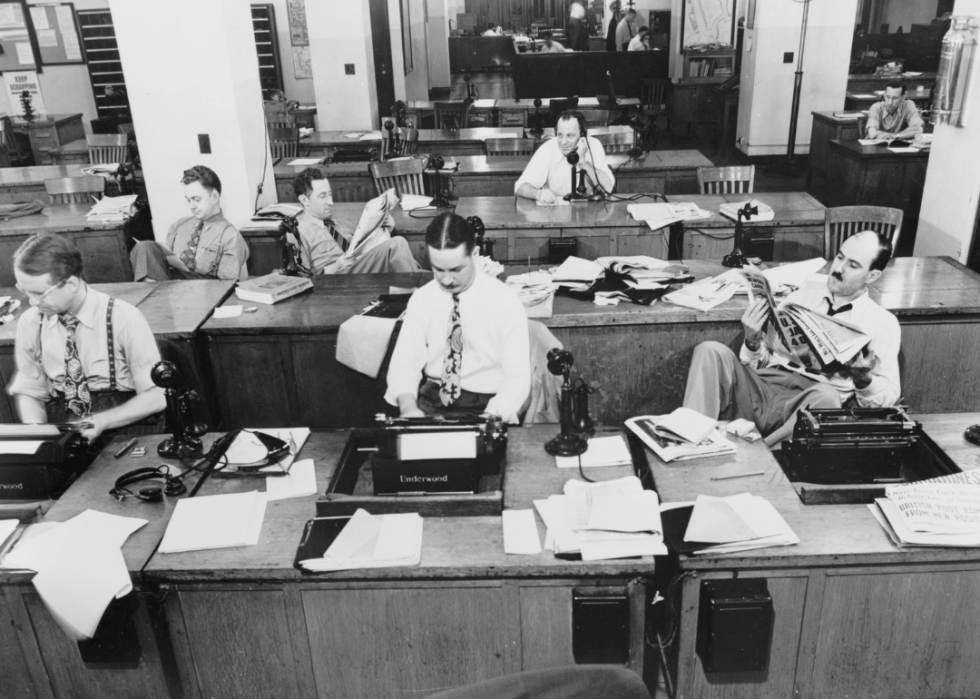
one / 50
Typewriters were doomed to history
Few working journalists today remember the days when newsrooms echoed with the abiding clackity-clack of typewriters equally reporters and editors furiously churned out copy in real-time on actual paper. Typewriters had by and large vanished in almost newsrooms by the end of the 1980s, equally they were replaced offset with word processors and and so personal computers. With them went spools of inked ribbon, Wite-Out correction fluid, jammed keys and artillery, and sliding carriages.
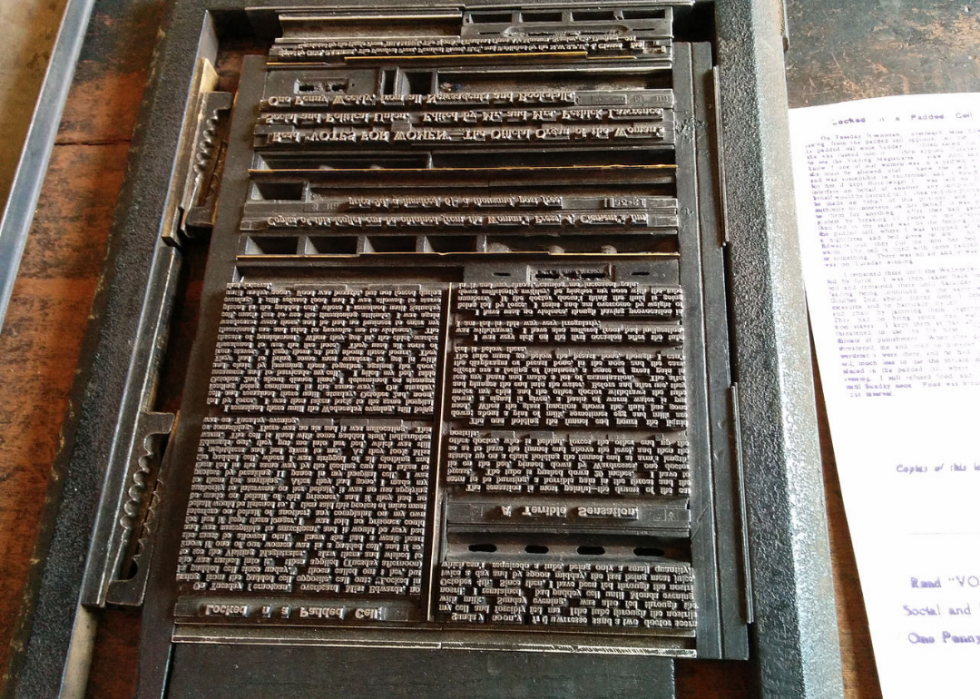
2 / fifty
Cory Doctorow // Wikimedia Commons
Typesetting concluded its 500-year run
Like so many advances in the world of publishing, Johann Gutenberg invented typesetting in the 15th century. The concept of arranging interchangeable cast-metal messages to print pages quickly and consistently endured through the 1970s. After roughly one-half a millennium, all the same, modern software finally rendered the technology obsolete.
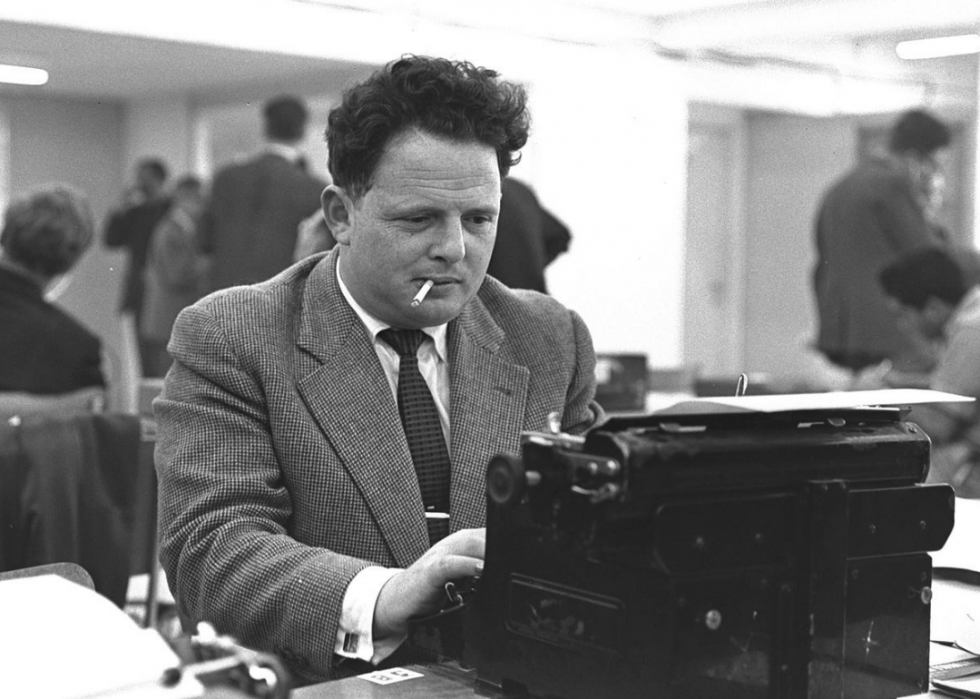
3 / 50
Israeli GPO photographer // Wikimedia Commons
Newsrooms went smoke-gratuitous
Newsrooms were historically as smoky as even the dingiest pubs or bars, every bit stressed out, deadline-pressed reporters and editors smoked while they hustled. But as people became more than enlightened of the dangers of smoking and secondhand smoke, newsrooms gradually and reluctantly became smoke-costless facilities. The shift followed a national trend as smoking savage out of favor beyond the state.
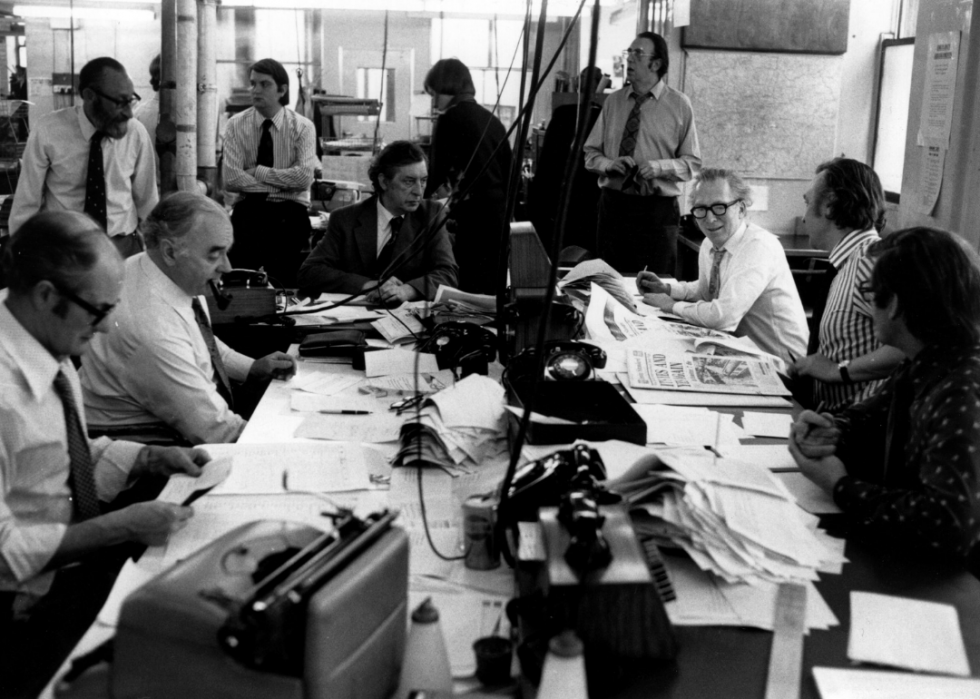
4 / 50
Evening Standard // Getty Images
Newsrooms diversified, just still remain behind the times
According to the Columbia Journalism Review, "the staffing of the American news media has never reflected the diversity of the nation." In the wake of race riots across the country in 1968, President Lyndon Johnson commissioned a written report that lambasted the near-full lack of not-whites in U.S. newsrooms and the failure of the white media to accurately cover ceremonious rights and other race issues. While things take improved dramatically over the by 50 years, the Pew Enquiry Center reports that white men brand up 48% of today'southward newsrooms compared with 34% of all workers.
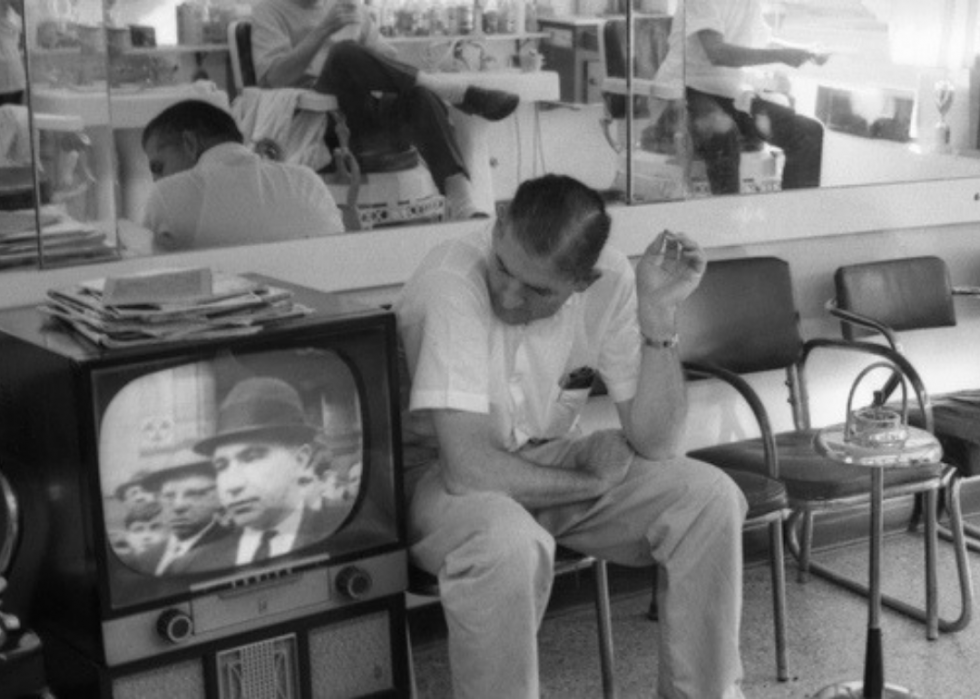
5 / 50
TV news hitting the large fourth dimension
In the 1960s, Telly news was a 2d-tier manufacture that relied on big, expensive equipment that simply could not compete with slim, but effective radio broadcast operations, and didn't have the brownie of impress journalism. That all changed, however, when President Kennedy was assassinated in 1963 and his accused killer was murdered on live TV. Newspapers couldn't adequately capture the drama and radio couldn't disseminate the barrage of photos and videos that were emerging every hour—but television set could exercise both and the medium became an equal bedroom in the 3-tiered media structure of the era.
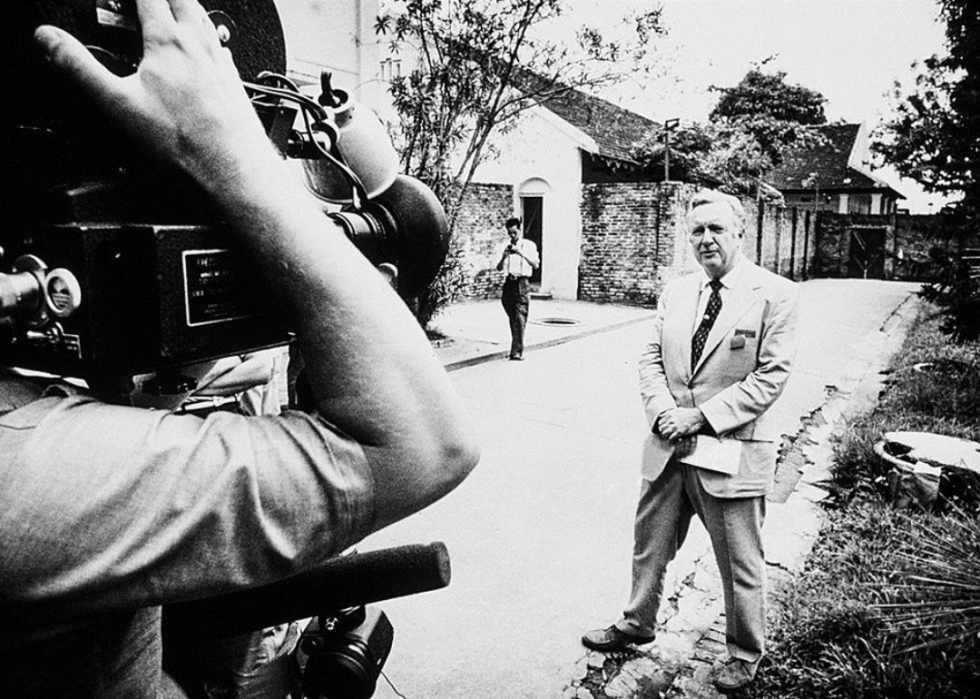
6 / 50
The anchor format dominated for decades
Walter Cronkite broke the news of the Kennedy bump-off, reported from the front end lines in Vietnam, and beamed news of the ceremonious rights movement into U.S. households. At that place was a time when Americans knew little more than about world events than what Walter Cronkite told them. The ballast format required Americans to put extraordinary faith in the reporting of a single person, and they did—Cronkite was long dubbed "the near trusted human being in America."
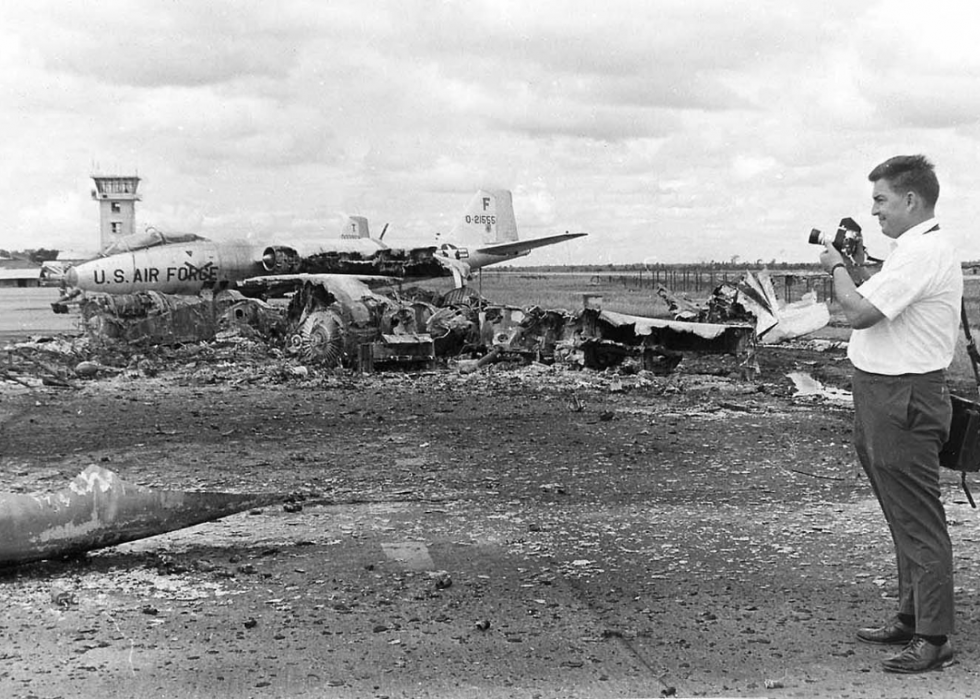
vii / 50
Vietnam changed journalism and journalism changed Vietnam
Although a lack of satellite feeds forced days-long delays betwixt state of war reporting on the front in Vietnam to televisions in American family rooms back home, no state of war had ever been documented so closely. Graphic images of war and scrolling lists of the names of the dead stoked ferocious anti-war sentiment in the United States. Conversely, close reporting on the burgeoning protests in U.S. cities fabricated their way to soldiers fighting a war that they knew from first-manus reporting was growing increasingly unpopular dorsum home.
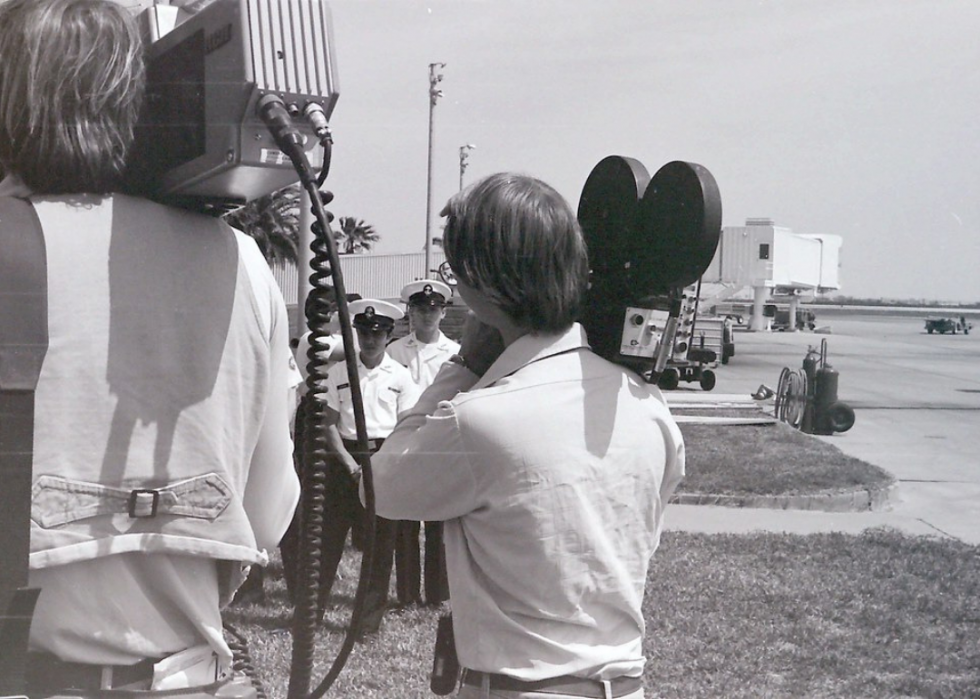
8 / fifty
TV news became big business
By the 1970s, TV news had gained mainstream credibility and was now considered a reliable and professional source of information. It was also large business organisation. News divisions past then were amongst the nearly assisting cash cows of major Goggle box networks.
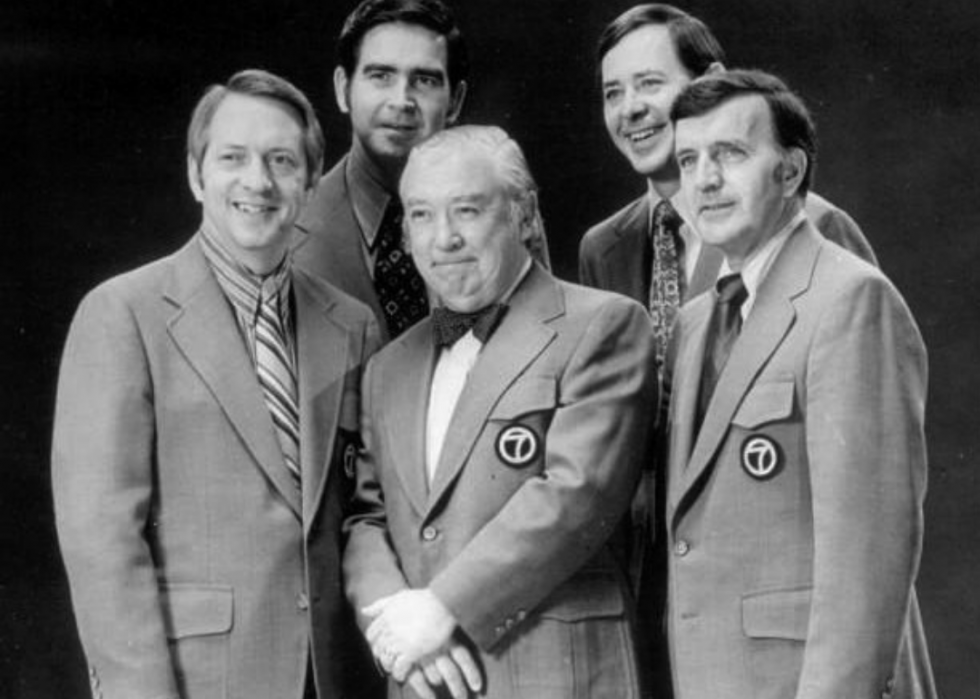
9 / 50
WLS-Goggle box, Chicago // Wikimedia Commons
The anchor format shifted toward news teams
While national news programs held truthful to the trusted ballast format, local stations and affiliates in the 1970s headed toward a new paradigm. Stations began assembling news "teams" with specialists similar meteorologists, and news, sports, and traffic reporters to deliver the news in formulaic segments while engaging in affable, happy chatter in elaborately decorated studios.
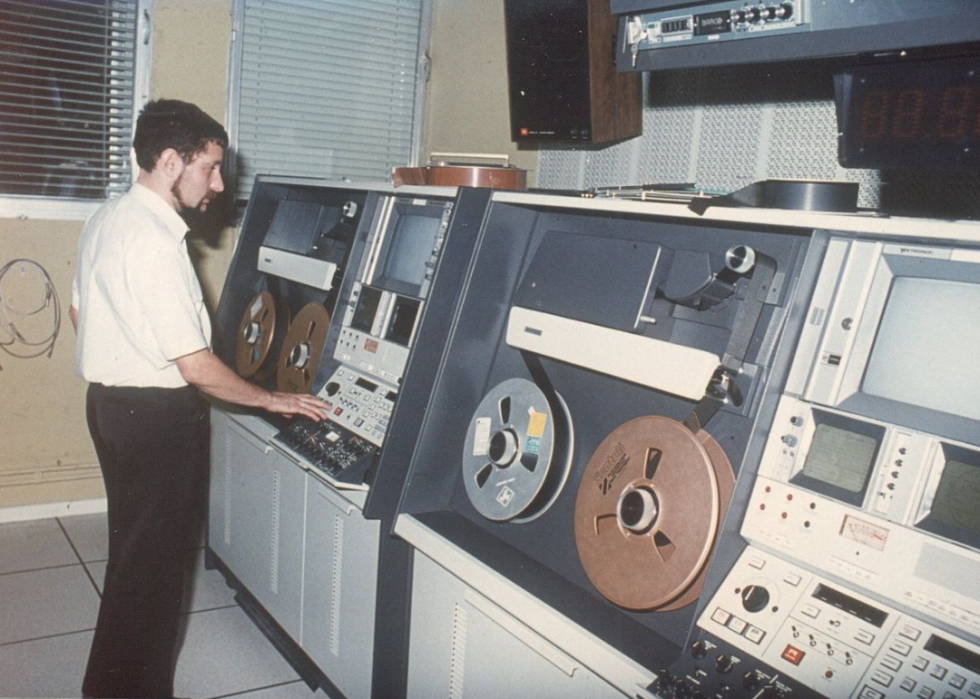
x / 50
Belgavox // Wikimedia Eatables
Record sped up news coverage
Also in the 1970s, the advent of tape began to supersede pic, which made getting images on the air a much faster and easier procedure. Historic delays were shortened and news coverage fabricated a giant bound forward toward the instant coverage of today.
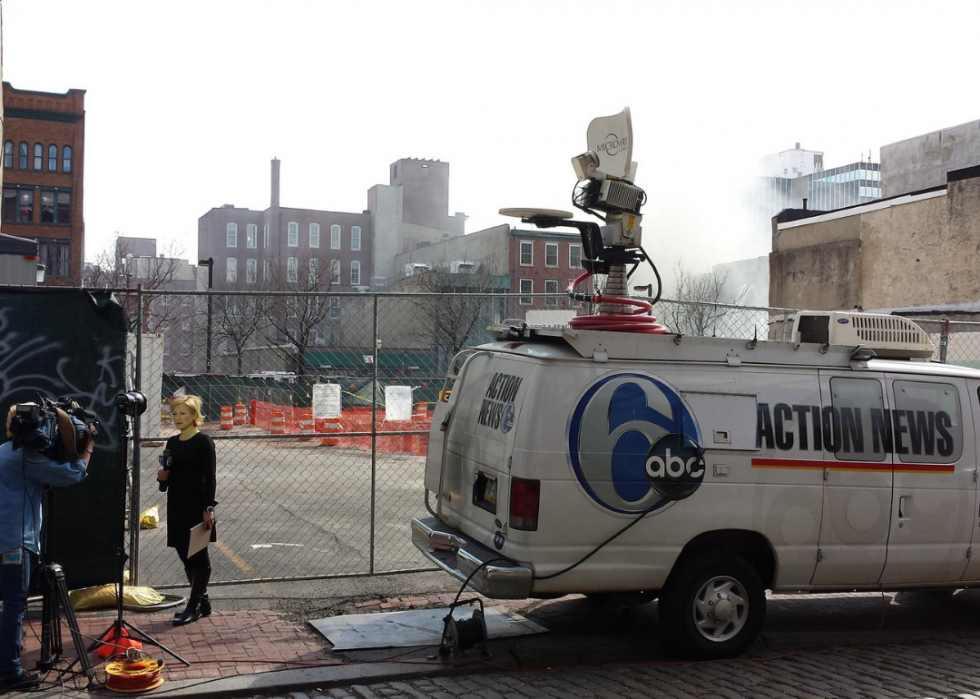
xi / l
Microwave trucks enabled live reporting
One of the most consequential developments in the history of television news was the invention of the microwave truck. The massive, expensive, equipment-laden vehicles immune news crews to race to fires, floods, and other breaking news events and report live from the scene as the drama unfolded.
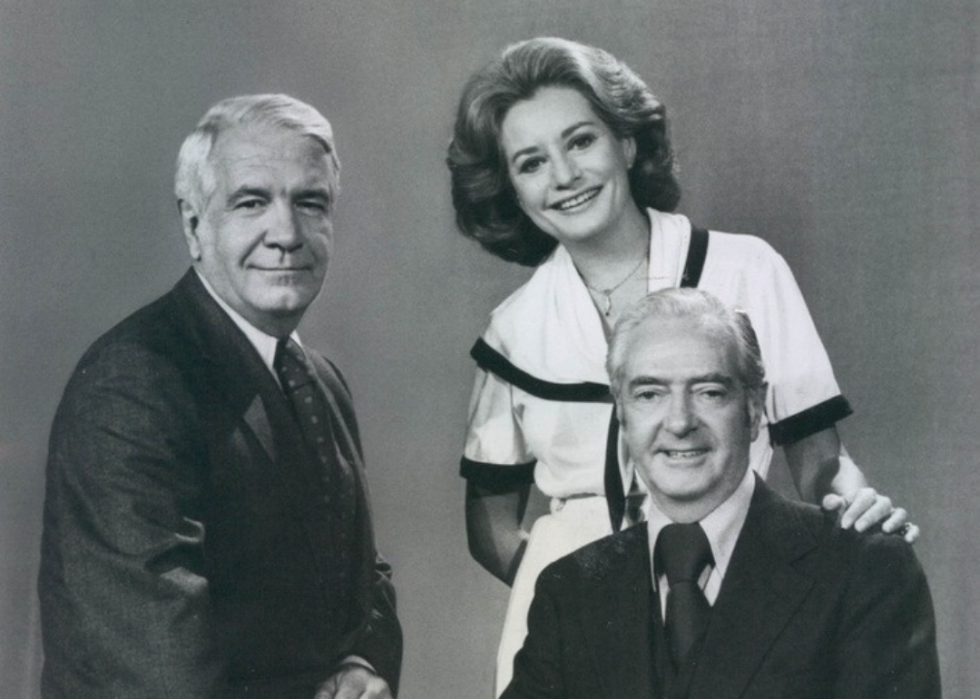
12 / l
ABC News // Wikimedia Commons
Women broke into TV news
In 1976, national television receiver news was notwithstanding delivered exclusively by white men. That all changed on Oct. 4 when Barbara Walters broke the glass ceiling. ABC brass called a news conference to announce that Walters had been named the kickoff adult female to anchor a nightly newscast, alongside Harry Reasoner—Walters recalled that "she had spent virtually of her time answering what she would wear for the first show," co-ordinate to Diverseness. The duo lasted simply 2 years and in that location wouldn't exist another female person anchor until NBC hired Connie Chung 15 years subsequently.
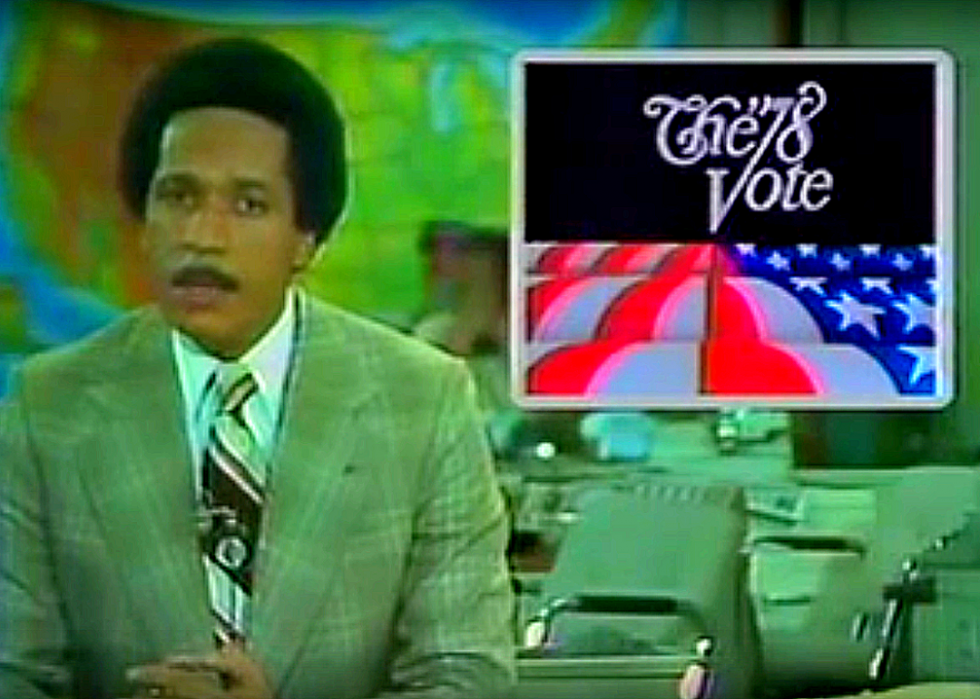
13 / 50
African-Americans broke barriers
Two years afterwards Barbara Walters broke the national Television set news gender bulwark, Max Robinson became the first African-American hired as a network broadcast anchor. Robinson'due south contract with "ABC World News This night" signaled the first time in history that people were informed by a national news ballast who wasn't white.
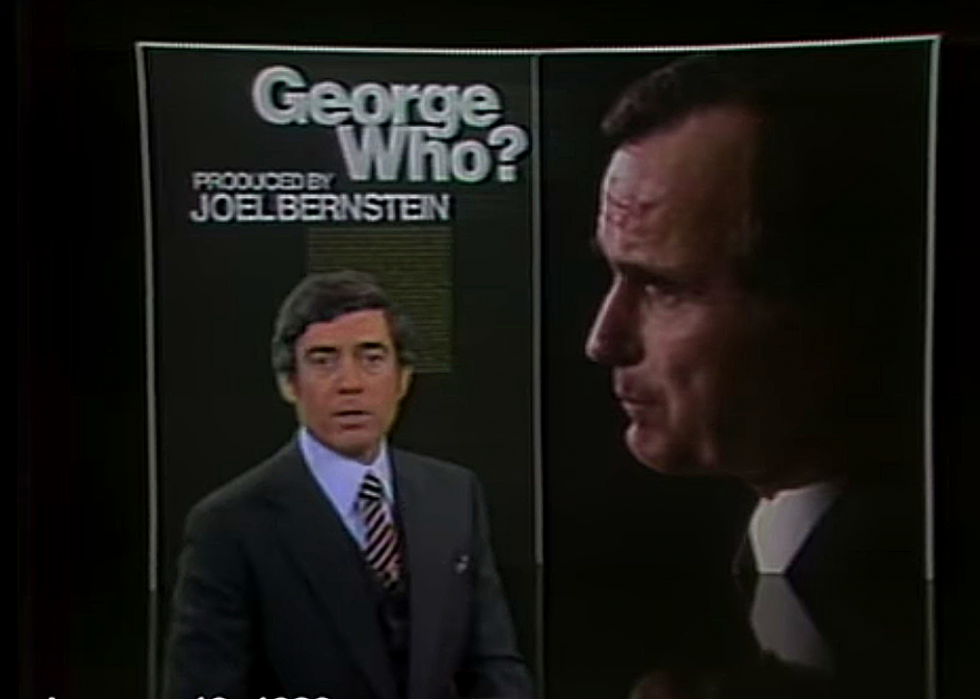
fourteen / 50
The Tv news magazine added substance over fashion
When Walter Cronkite retired from "CBS Evening News" in 1981, Dan Rather took his place. Rather was known for in-depth investigative reporting on longtime news testify "60 Minutes," a new genre of media called the Tv news magazine. They were among the most successful and influential programs on television, including such programs as "20/twenty" and "Dateline NBC."
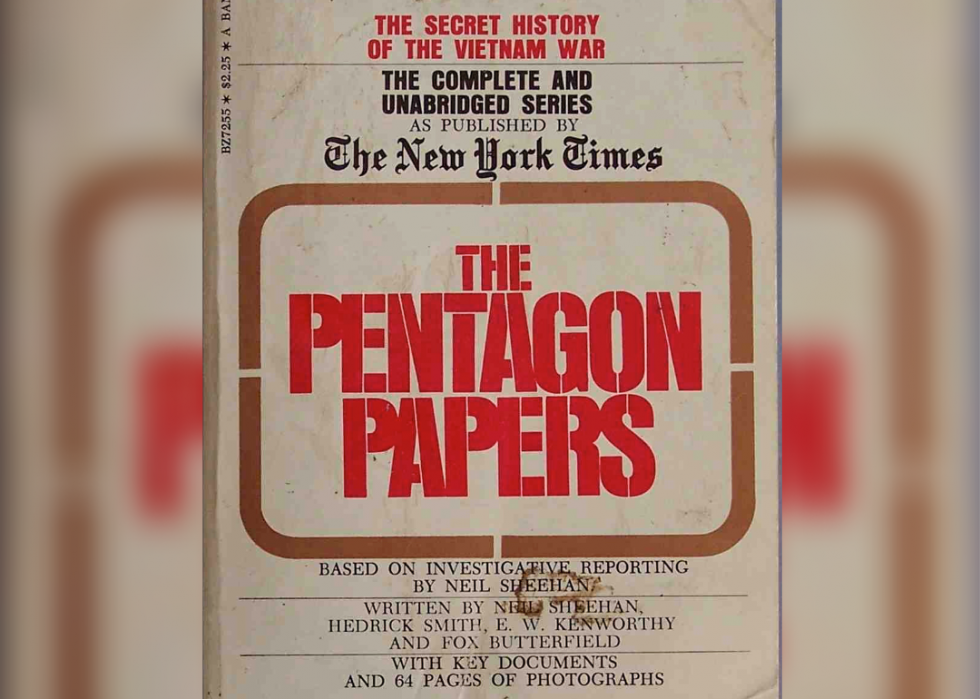
fifteen / l
Christo Drummkopf // Flickr
Journalists won the correct to betrayal government lies
In 1971, during what The Atlantic referred to as "the glory days of journalism," the New York Times and Washington Post ran a series of articles exposing a massive conspiracy that proved the regime and military had been intentionally lying to the American public for decades about the state of war in Vietnam. President Richard Nixon fought all the style to the U.South. Supreme Court to proceed whatsoever more than leaked documents, known every bit the Pentagon Papers, from coming out. He lost, and the function of journalists as constitutionally empowered guardians of the truth was enshrined—but the worst was even so to come up.
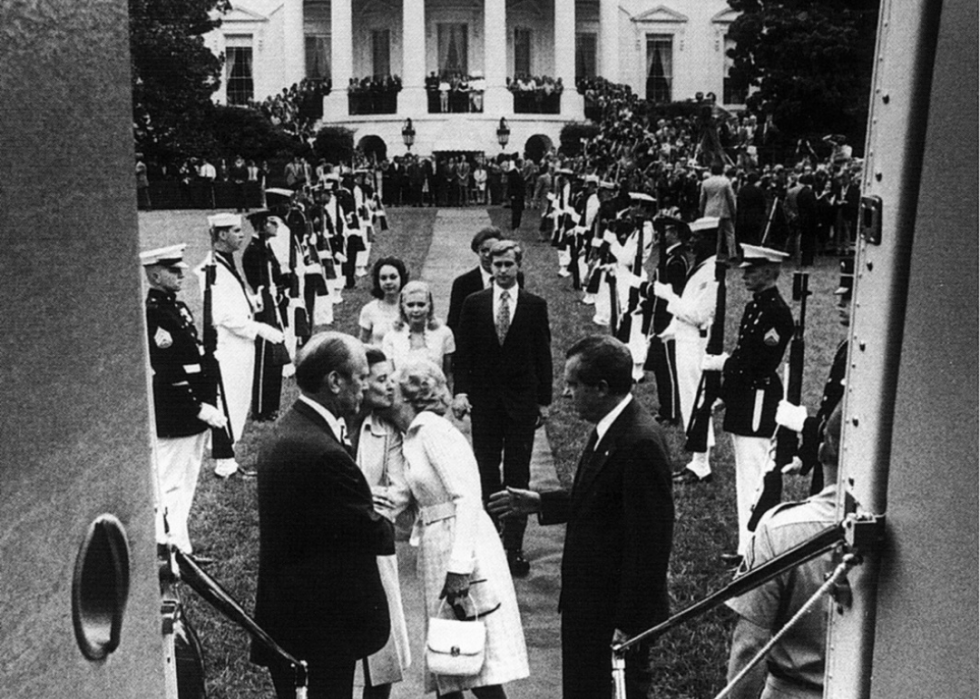
xvi / 50
Oliver F. Atkins // Wikimedia Commons
Journalists targeted, and were targeted past, the powerful
Journalists take long served as a check on the powerful, investigating abuse, following money trails, exposing malfeasance, and providing transparency—just that function set journalists on a collision course with the most powerful man in the world. In 1972, journalists from the Washington Post reported on a burglary at the Democratic National Committee at the Watergate Hotel in Washington D.C. The story would topple President Richard Nixon, elevate journalists to the status of celebrity civilization warriors, and turn the news media into a boogeyman that many conservatives associated with liberalism and bias.
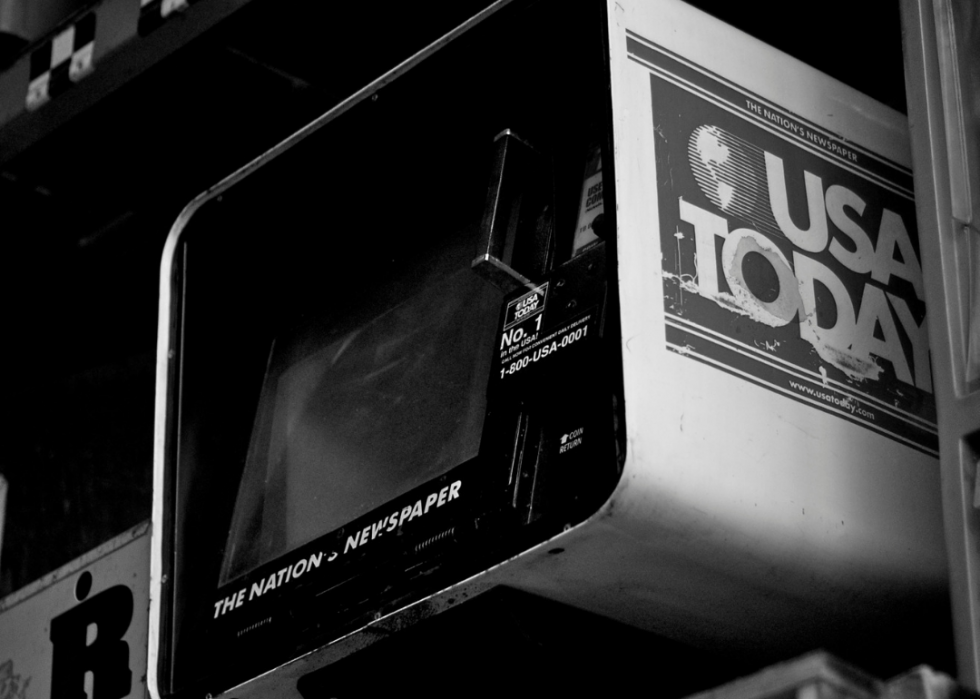
17 / 50
Newspapers got brighter
Founded in 1982, U.s.a. Today is the most widely circulated newspaper in the United States, and in 1984, it brightened up the earth of print media. That year, it printed its first full-color edition across all its sections. The manufacture, which establish black-and-white photos to be more than dignified, derided the publication with the nickname McPaper, simply when USA Today succeeded, the newspaper was apace copied—in 1997, the New York Times, long known equally the "Gray Lady," became the final major newspaper to cave in and print colour photos.
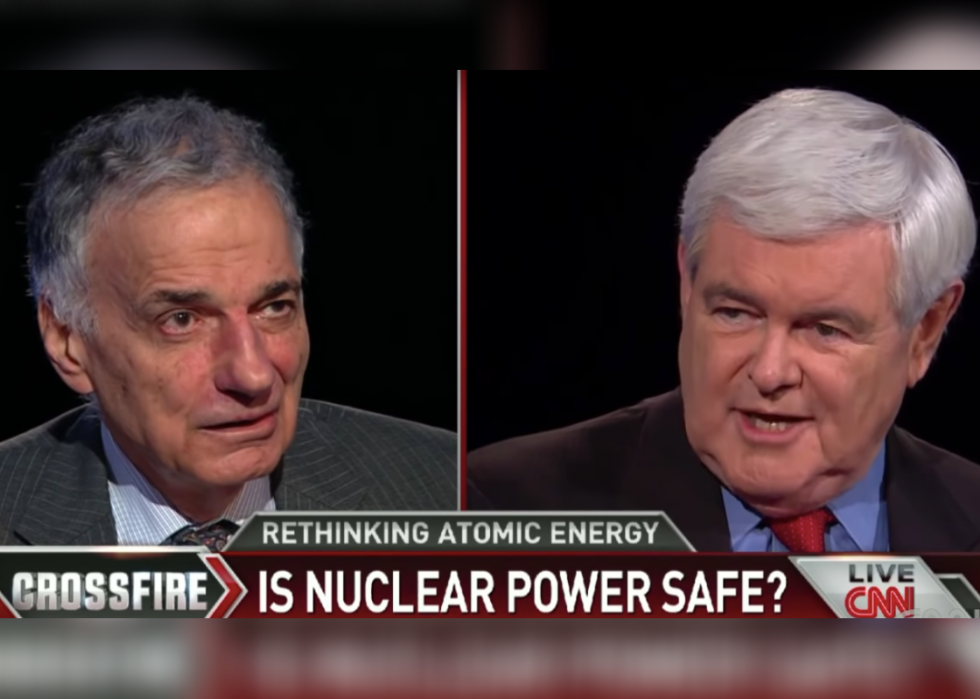
18 / 50
Crossfire launched the arguing talking heads format
The same year that USA Today changed print journalism in 1982, the show "Crossfire" ushered in a new era of idiot box news. The format featured conservative and liberal pundits arguing almost the topics of the day, and although it was billed as a forum for debate, it frequently degenerated into a serial of talking-point battles between ideological extremes. The format would endure in the 21st century as antagonistic partisan bickering became a standard characteristic on all major cablevision news networks.

19 / 50
Tragedies were witnessed in real time
The 1986 explosion of the space shuttle Challenger unified a nation in mourning. The event was witnessed past millions equally it happened on alive TV, including countless schoolchildren, who tuned in to support Christa McAuliffe, the get-go teacher in infinite. It was the start of the modern media era where people expected to run into news—even the nigh difficult and upsetting—as it happened in real time.
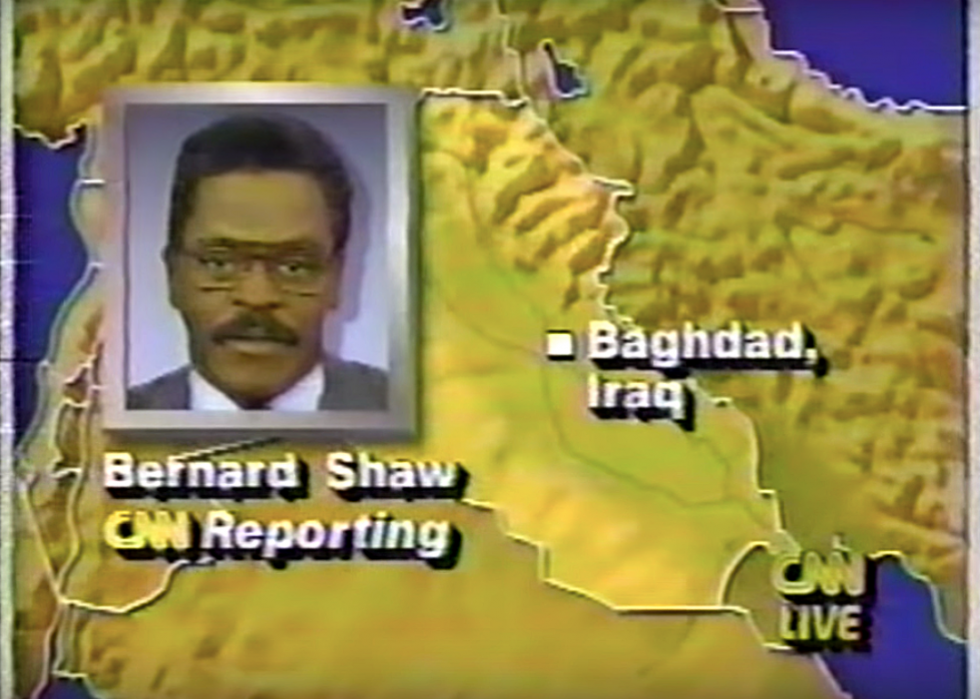
20 / 50
CNN trumped the "Big 3"
CNN was founded in 1980, but the station's watershed moment came in 1991 when the Gulf War broke out and CNN was the only U.S. news organization able to broadcast from the front. The then-chosen "Big three" networks—long the dominant forces in the news media—were humiliated and CNN emerged as the most credible organization with the farthest global accomplish. The era of network cable news had begun.
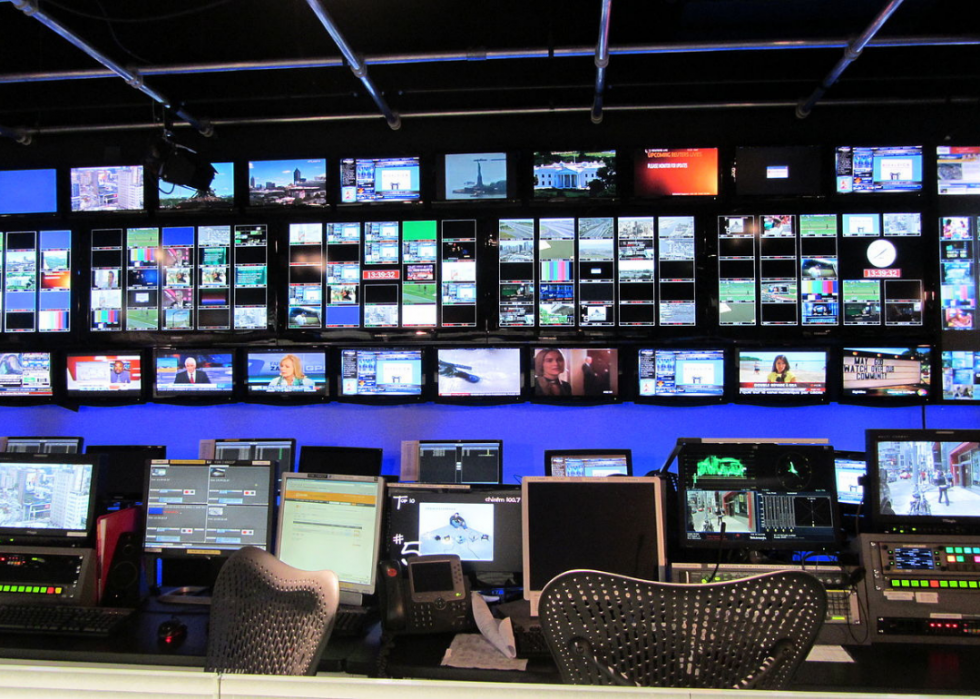
21 / 50
Loozrboy // Wikimedia Commons
The 24-60 minutes news cycle emerged
Another major modify stoked by CNN'south coverage of the Gulf War was the emergence of the 24-hour news cycle. Television receiver news had historically been delivered in the morning time, evening, and night in one-half-hour segments, complemented by Television set news magazines and specials. In 1991, however, audiences tuned in 24 hours a day to witness the country'due south awesome armed services might on display, and when the war ended, the country expected—and got—nonstop cable news.
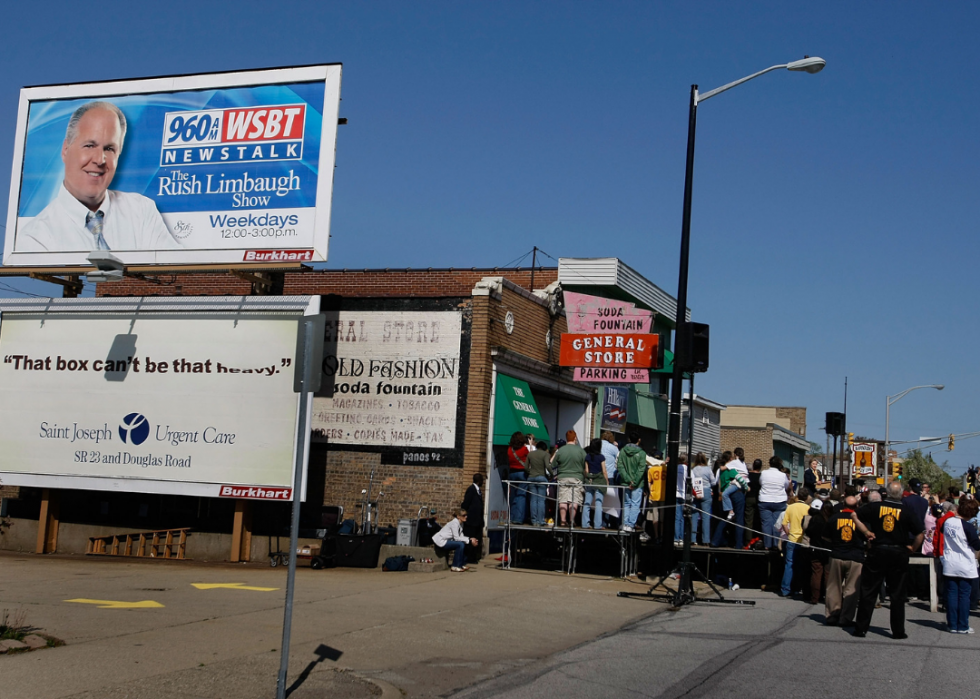
22 / 50
Joe Raedle // Getty Images
AM talk radio became a powerful force
FM radio was the dominant forcefulness in the 1980s, thanks to its high-fidelity format that sounded much better on both high and low notes than AM ever could. Mid-range human chatter, on the other hand, does not require loftier allegiance broadcasting to sound good. In the tardily 1980s, the decades-old Fairness Doctrine—which required public stations to devote equal fourth dimension to competing points of view on controversial topics—was repealed as part of President Ronald Reagan's massive deregulation push. The moment paved the way for hyper-partisan conservative AM talk radio, most notably the national syndication of "The Rush Limbaugh Show."

23 / 50
War reporting took identify in real time
World War II was circulate over the radio and through heavily censored newsreels. Vietnam was a war told through the medium of film. Cheers to the literal and figurative ascent of satellites, however, the state of war in the Western farsi Gulf became the world'southward get-go televised state of war.
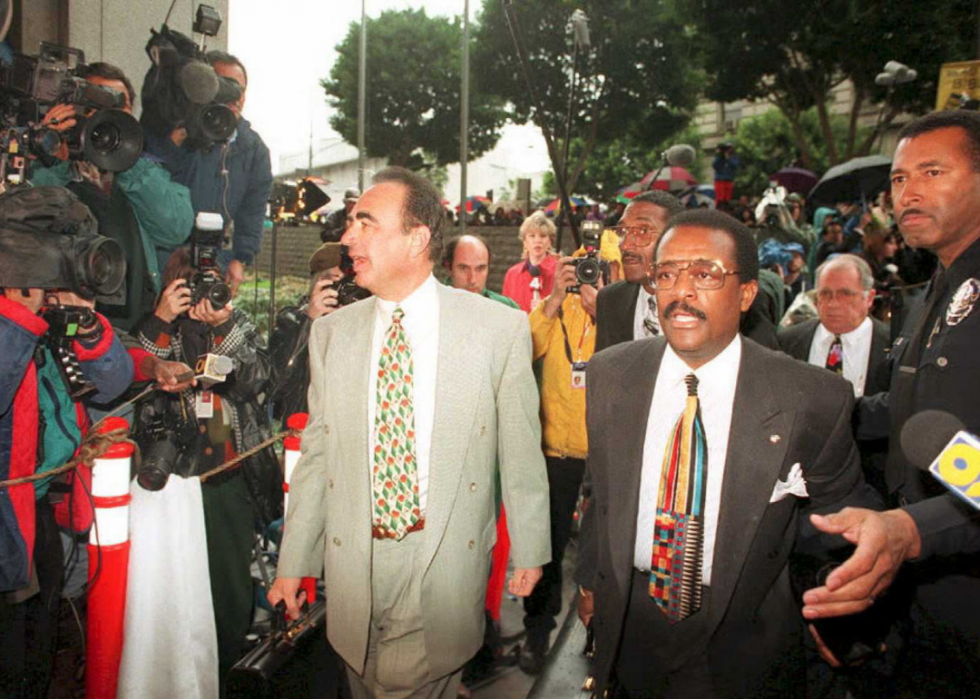
24 / 50
Dan Grroshan // Getty Images
The trial of the century turned news into drama
The murder trial of O. J. Simpson was dubbed the "trial of the century," which wasn't an exaggeration if the level of coverage is the barometer. The public's appetite for the drama was insatiable and the news media delivered. The masses were glued to perpetual TV coverage of every twist and turn, as well equally an endless ocean of coverage from news magazines and radio broadcasts—the hardest-hitting, most-watched drama in the world was officially the news.
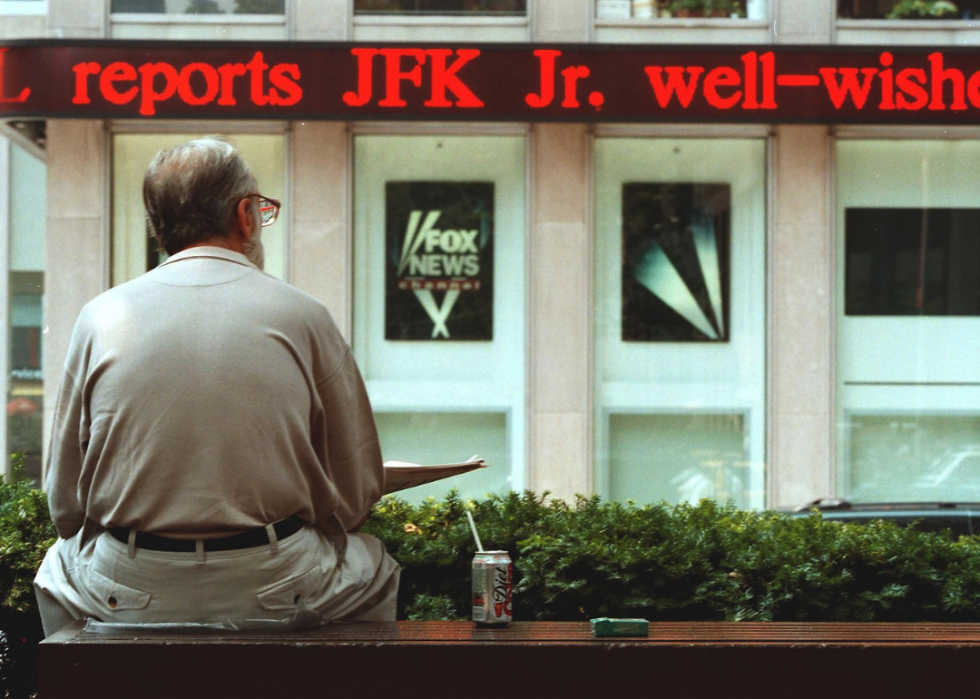
25 / l
DOUG KANTER/AFP // Getty Images
Network news took over
When CNN'south business model proved successful, others followed accommodate. Fob News and MSNBC were both launched in 1996 and, along with CNN, became the new "Big iii" that most Americans turned to for information.
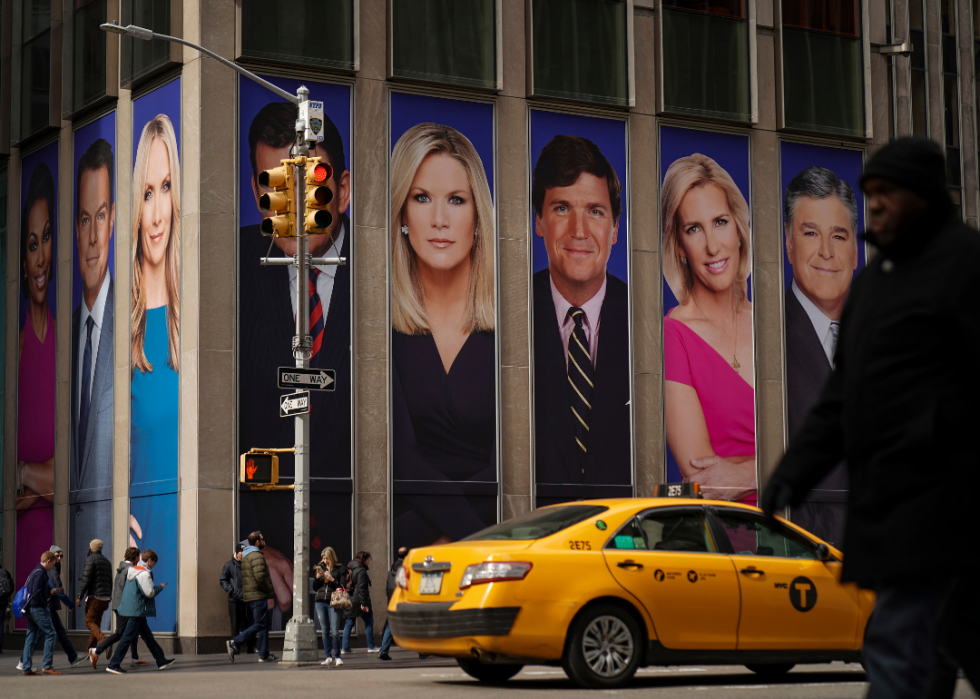
26 / 50
Drew Angerer // Getty Images
News networks became partisan battlegrounds
The ascension of cable news networks launched an unprecedented era of media-driven political polarization. Conservatives tuned into Fox News and progressives flocked to MSNBC, each network tailoring its content to the leanings of its audience. The networks quickly became places where people turned non to challenge or raise their political beliefs, but to ostend their existing ideologies.

27 / 50
U.Southward. Department of Land // Flickr
Echo chambers emerged
New technologies emerged in the 21st century that gave Americans unprecedented control over what news they consumed and how they consumed it, and only like the talk radio and cable networks had in the previous decades, they were drawn largely along partisan lines. People on either side of the political divide were at present listening to podcasts or talk radio that confirmed and reinforced their beliefs on the drive to and from work, only to come up dwelling and turn on a news network that did the same. Throughout the 24-hour interval, every twenty-four hours, their social media feeds fed a nonstop stream of bitterly divided partisan information, misinformation, and prejudices that suited their politics—the political echo chamber was born.

28 / 50
Paperboys went the way of the typewriter
Generations of children earned a few actress bucks by waking up early and delivering newspapers on their bicycles. Every few weeks, the paperboy would knock on his customers' doors to collect the tab for the papers he delivered. The American paperboy, however, is now largely the stuff of nostalgia as nigh papers today are delivered by adults in vehicles who subscribers don't know and will never meet.
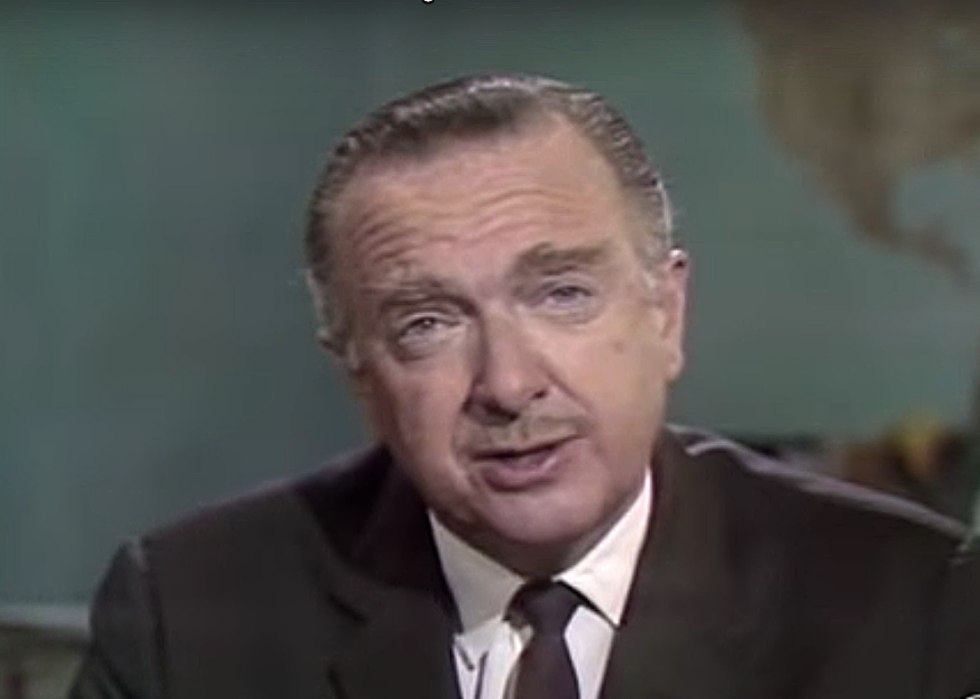
29 / fifty
Walter Cronkite shifted the state's view on state of war
On Feb. 27, 1968, Walter Cronkite broke from traditional direct news commitment to opine on the carnage of the Vietnam War. Cronkite editorialized that the U.Due south. regime had long painted an unrealistically rosy picture of the disharmonize and that in reality, a stalemate was the just realistic pick in a war that was simply not winnable. The moment—a single statement from a unmarried newsman—signaled a major shift in U.S. sentiment about the war.
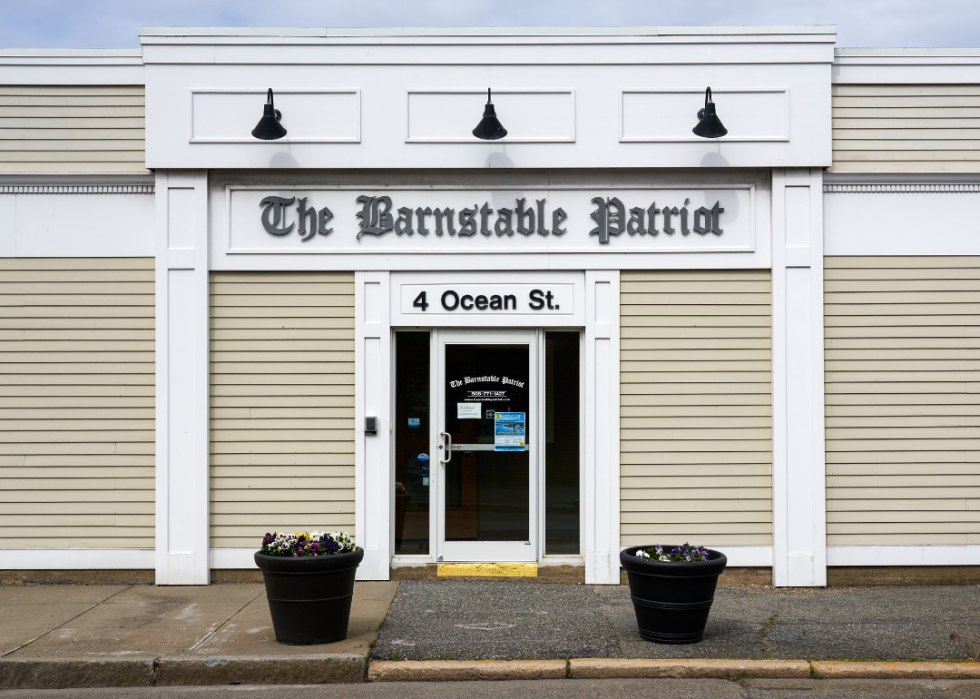
30 / fifty
Rosemarie Mosteller // Shuttestock
News deserts emerged
Local newspapers, long a mechanism for informing communities and property local power brokers accountable, are becoming one of the about critical casualties of the reject of print journalism. Towns and cities across the land exist in what Bloomberg refers to every bit "news deserts"—entire regions with no reporters excavation through municipal records, attending city council meetings, and prying into the dealings of politicians. Studies show that news deserts have lower voter turnout, more government abuse, less transparency, and a loss of a sense of customs.

31 / l
Isabelle Ohara // Shutterstock
Media consolidation concentrated news outlets
Independent newspapers and TV networks became harder and harder to come by in the latter part of the 20th century equally massive mergers and acquisitions led to an unprecedented era of media consolidation. By 2012, just six companies controlled 90% of the U.S. media.
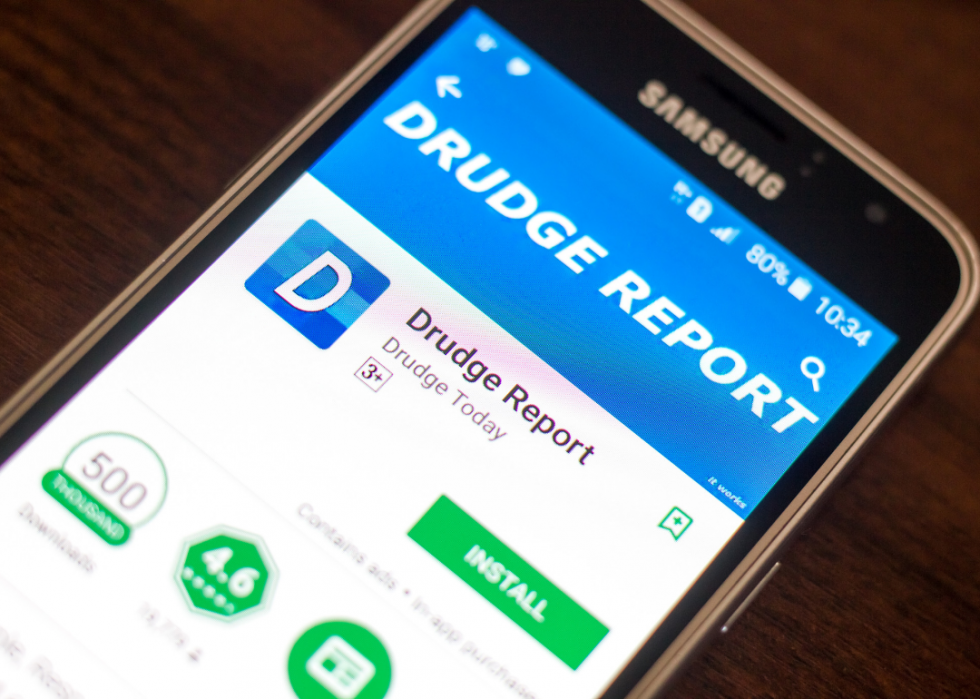
32 / 50
Sharaf Maksumov // Shutterstock
Matt Drudge legitimized blogging
President Bill Clinton's affair with White House intern Monica Lewinsky was one of the most sordid scandals in presidential history, merely it wasn't a network or cable news outlet that broke the news. Blogger Matt Grubber was instrumental in breaking the story, which led to a presidential impeachment. Bloggers, in the eyes of Americans, went from losers playing journalists from their parents' basements to a stiff and credible force in global media.
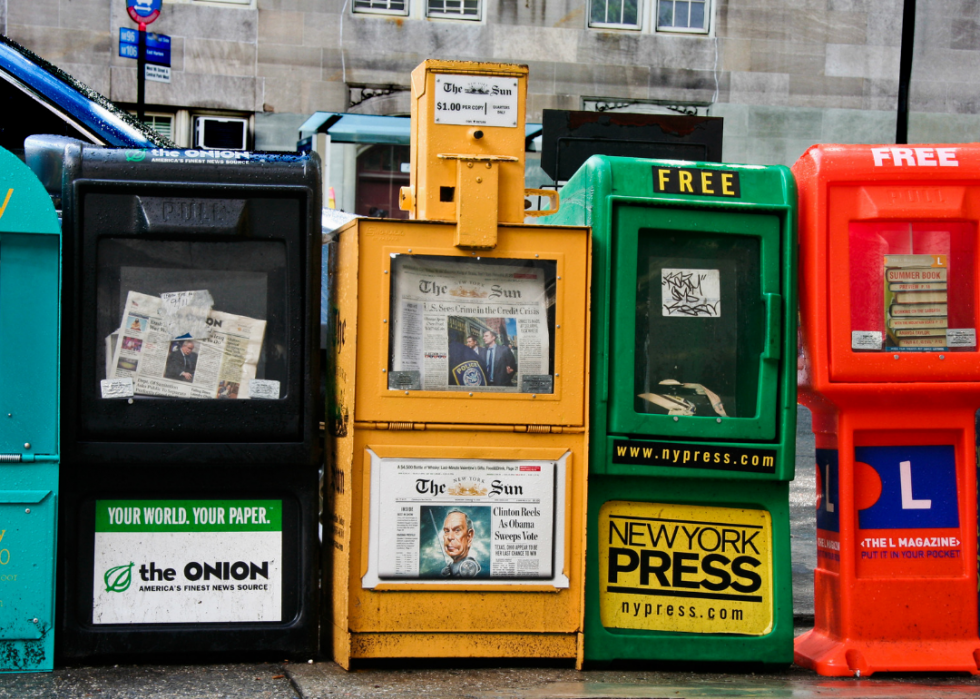
33 / 50
Juan Aunion // Shuttestock
Impress journalism declined
In 1973, during the golden historic period of newspapers, nearly 63.fifteen 1000000 Americans subscribed to daily newspapers. Those numbers had held fairly steady since the 1950s and remained strong through about of the 1990s. By 2017, however, that number had dropped past more than half to around 31 meg—the digital age had directly caused a expiry spiral for print journalism.
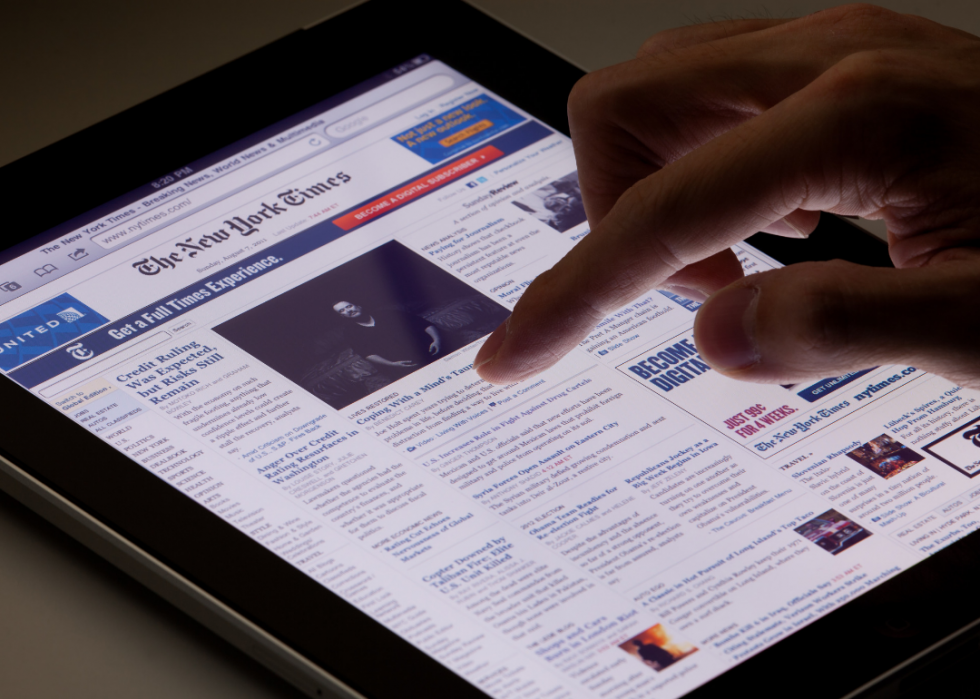
34 / 50
Publishers adult new revenue streams
As publishers struggled to supplant revenue lost by declining subscriptions, the concept of the paywall emerged as an alternative to advert-based monetization, and by 2018 was the rule, not the exception. Established, apparent, and long-running online publications began offering some content for costless while locking their most valuable content behind so-called paywalls, which are lifted with paid subscriptions.
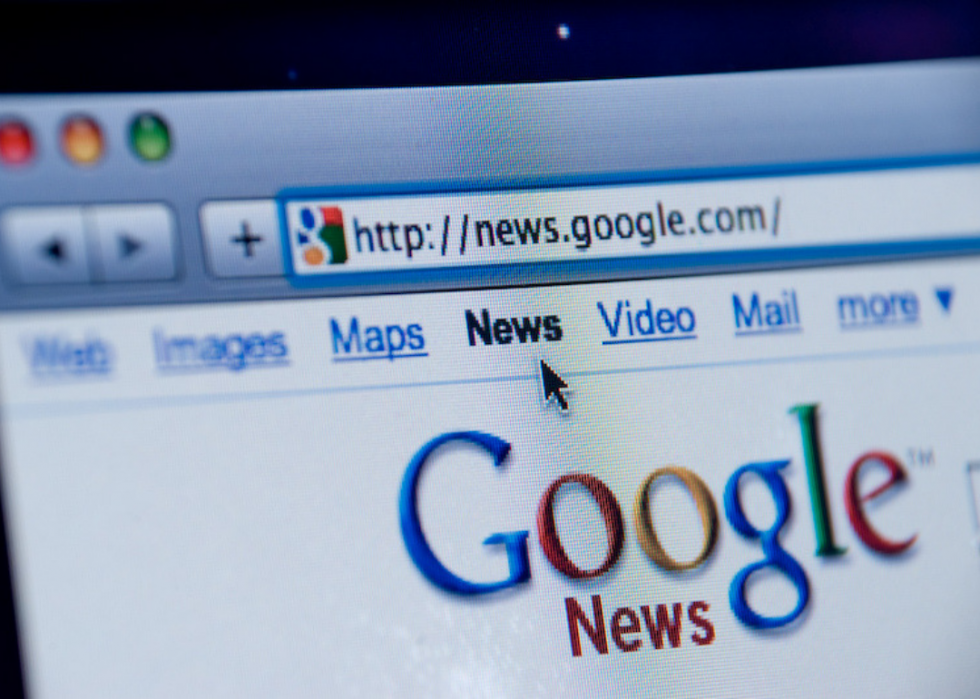
35 / l
Spencer Eastward Holtaway // Flickr
News aggregators offered unprecedented access and attain
Ane of the near consequential developments in the age of digital media was the rising of news aggregators. These apps and websites permit users to sign upwardly—for complimentary in most cases—for news content from an endless diversity of publications. At present, users could read many points of view on the aforementioned event without subscribing to multiple publications.
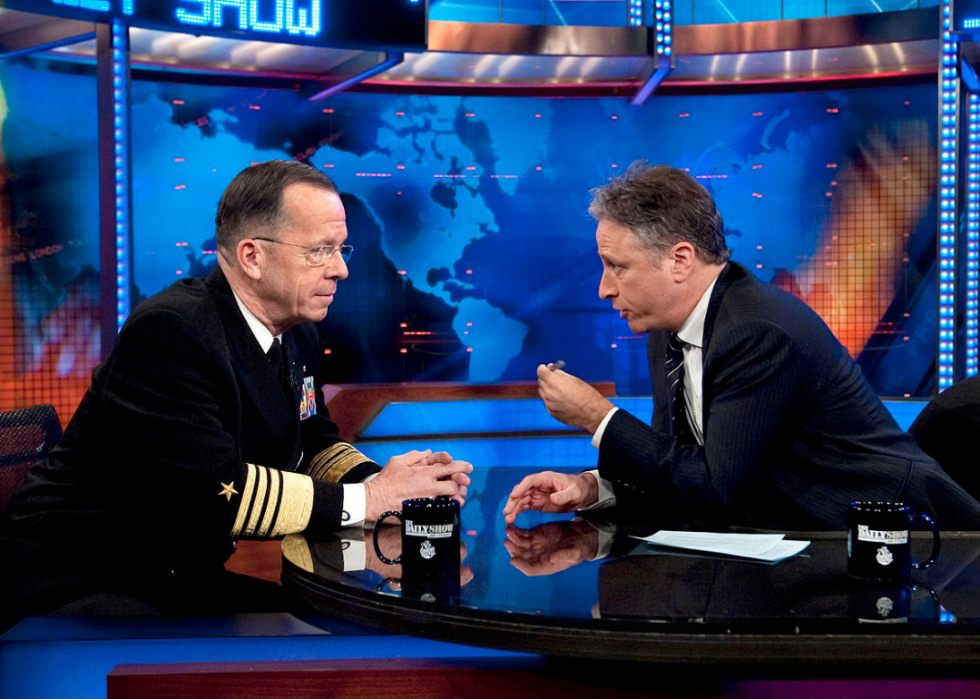
36 / 50
Chad J. McNeeley // Wikimedia Commons
News parody shows became news
Programs like "Weekend Update" on "Saturday Night Live" and afterward "The Daily Show" and "The Colbert Report," were designed as parodies that mocked the corporate media's commitment of news in the United States. They quickly became powerful cultural forces, yet, that challenged the narratives offered by powerful media organizations and personalities and really served every bit primary sources of data for many people—peculiarly the young and politically engaged.
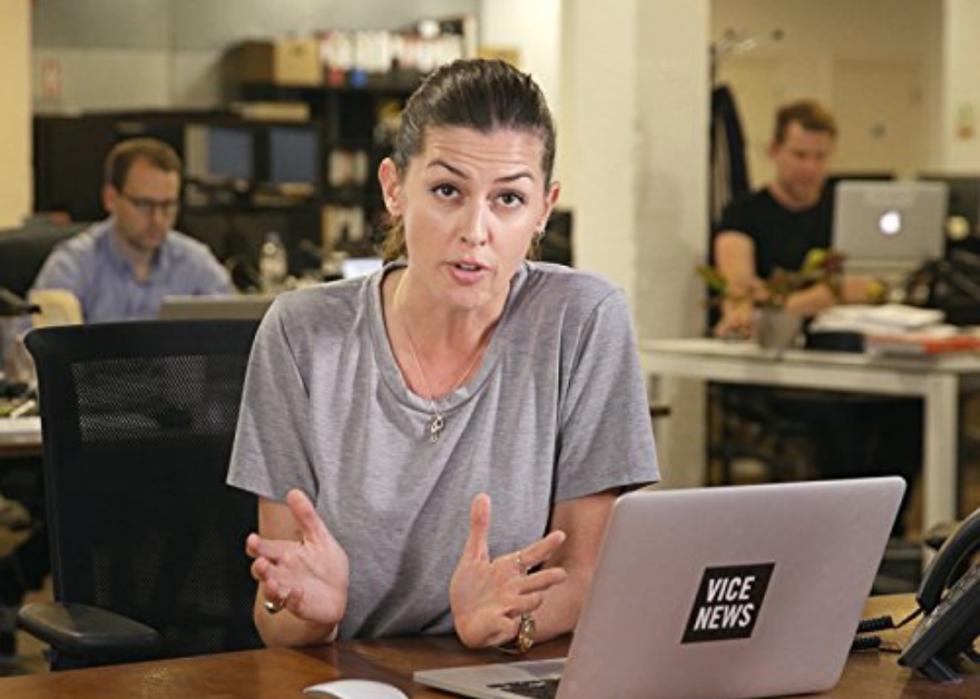
37 / 50
The digital age sidelined traditional journalism
By the end of the 1990s, the internet was becoming a fixture in U.Southward. homes. Longtime journalists in print, TV, and radio were overwhelmingly ho-hum to realize the impact the new technology would have on their industries. Information technology quickly became clear that the giants of the formats that dominated the 20th century would have to evolve or dice.
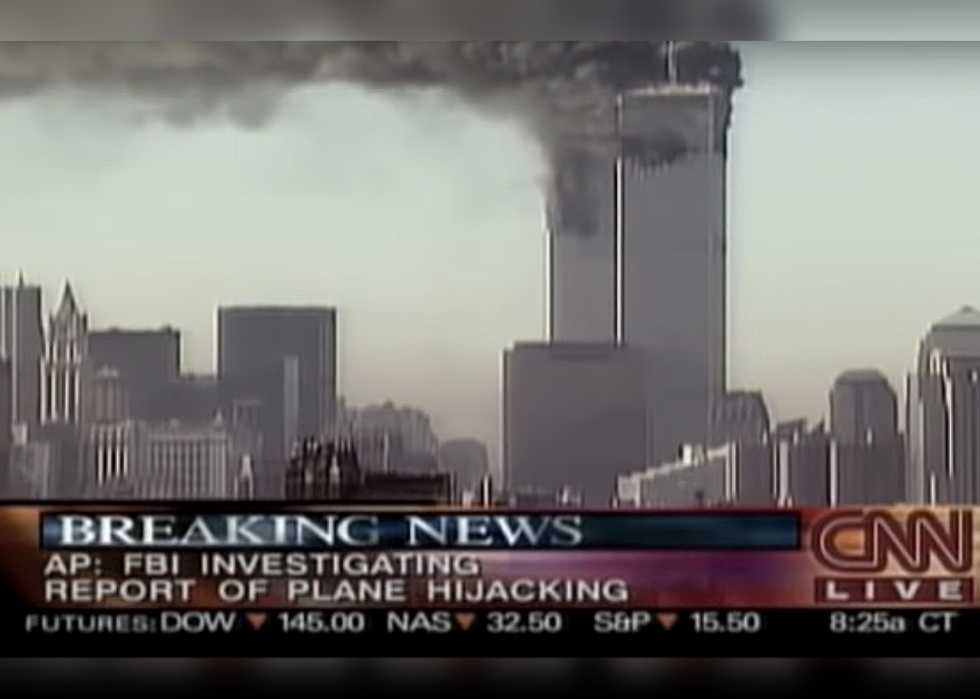
38 / 50
9/11 made the ticker a standard feature
The reality is that near news does non command 24-60 minutes coverage, but the events of nine/11 certainly did—and so some. The news networks roofing the attacks introduced crawling news tickers, or chyrons, that scrolled a constant stream of updates at the bottom of the TV screen to supplement emerging news equally it bankrupt during those frantic showtime hours and days. Well-nigh 2 decades afterward, the news ticker remains a fixture on all major networks.
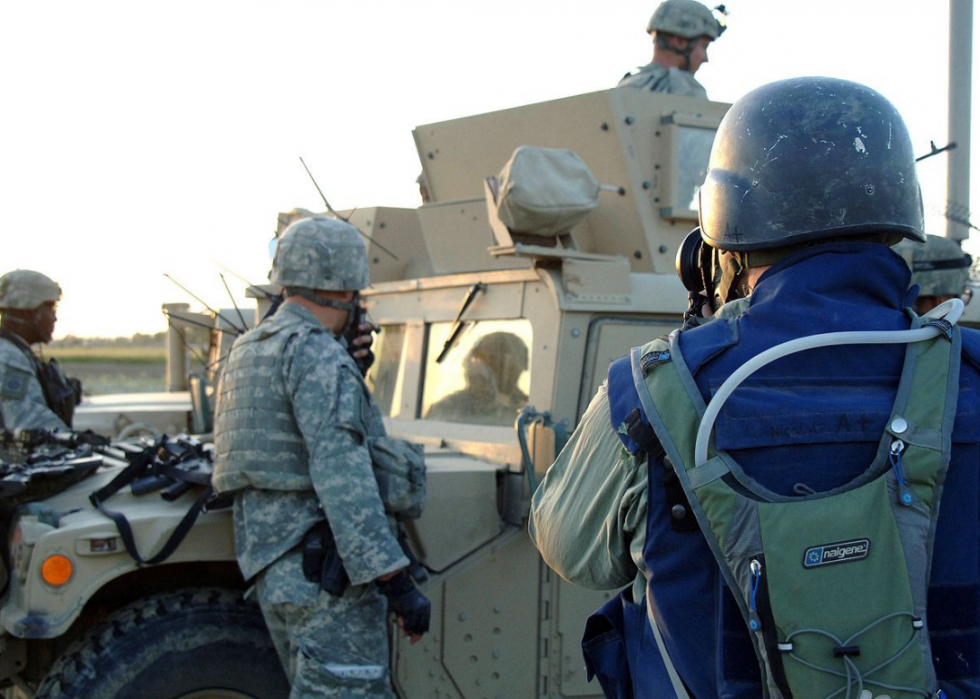
39 / 50
Staff Sgt. Michael L. Casteel // Wikimedia Eatables
War once again changed the nature of news
The state of war in Iraq was one of the about controversial and heavily reported events of the 21st century, and like all wars before, it marked a sea change in how news was gathered and delivered. In cooperation with the Pentagon, journalists were embedded with fighting units to report on the state of war as it happened from the front, next with active armed services personnel.
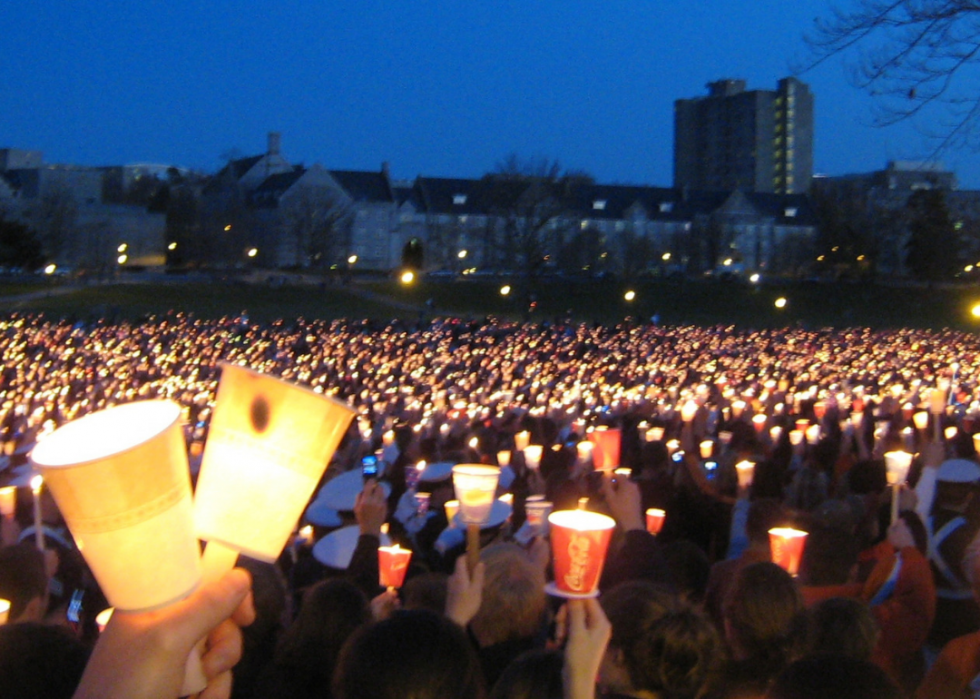
40 / fifty
Uknown // Wikimedia Commons
A tragedy revealed the future of news
In 2007, 32 people were murdered in a mass shooting at Virginia Tech. The gadget-savvy students who attended the academy unwittingly showed the world how news would be delivered in the future. Although there were no news crews, cameras, or broadcasting platform, the news broke instantly as survivors used social media to deliver images, videos, and written narratives in real fourth dimension as the events unfolded—it was a watershed moment for the citizen journalist.
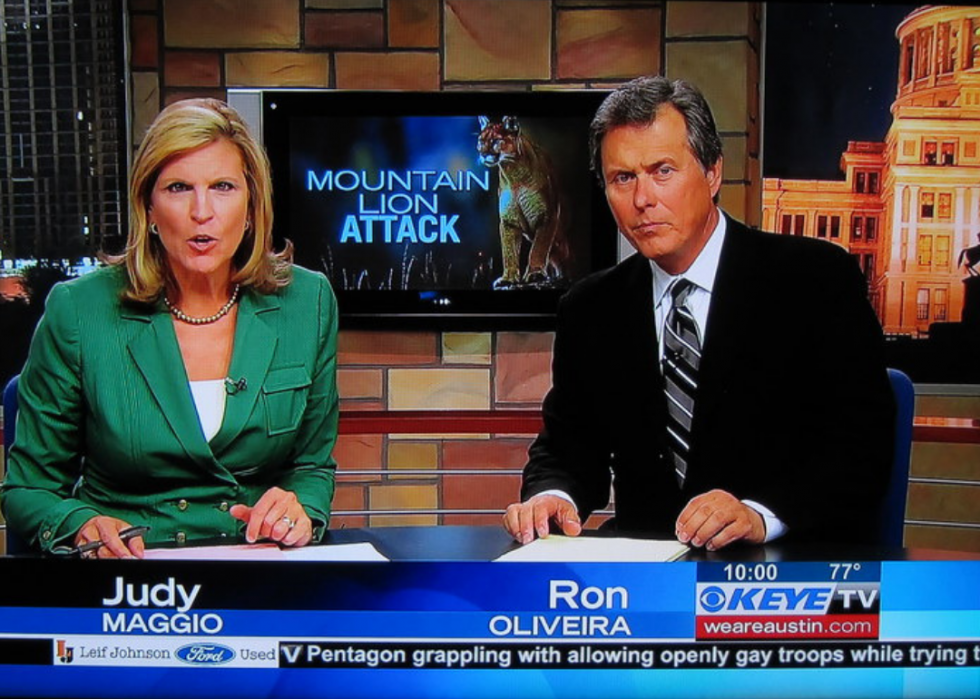
41 / fifty
Local news broadcasts became yesterday's news
By the 2010s, the mobile era was in full event and the masses had instant access to apps or websites that gave them real-time updates about weather, traffic, sports, and breaking news from around the world. The tradition of sitting downward at 6 p.1000. to watch news that was hours quondam felt primitive and unnecessary, and the friendly chatter of local news teams became mostly the domain of older audiences.
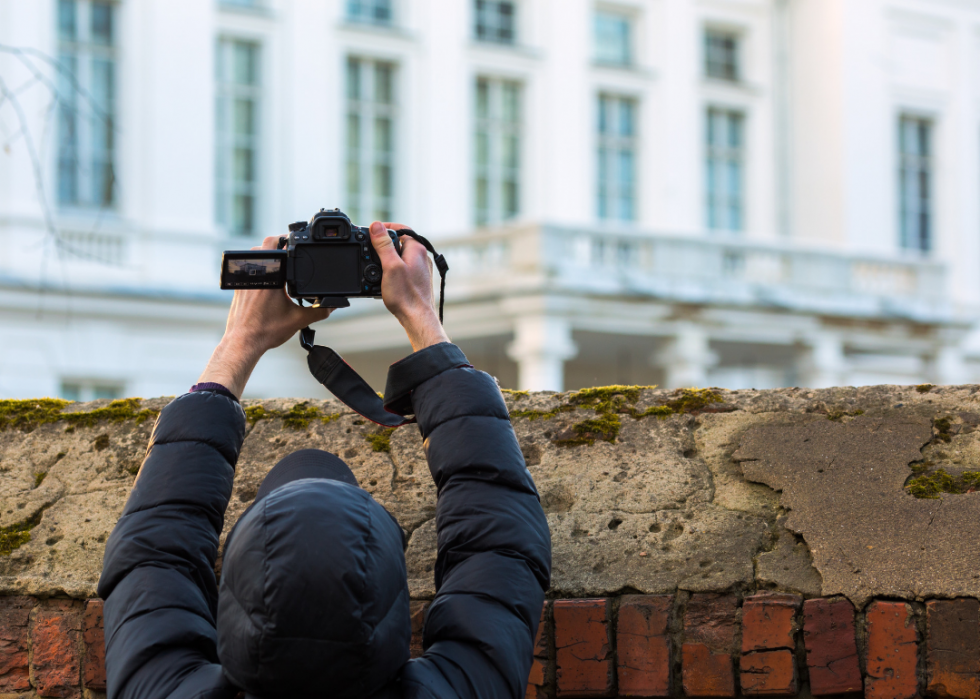
42 / 50
Investigative reporting experienced a renaissance
The celebrity days of investigative journalism that exposed war crimes and toppled a presidency in the 1970s had faded into obscurity equally formulaic news delivery and the ascension of editorial opinion shows dominated the new media that emerged in the 1980s and 1990s. The internet, social media, and smartphones, even so, enabled a new generation of investigative journalists, who could pry into malfeasance, abuse, and shady dealings at all levels in every corner of the world with little investment in equipment and no need for the support of a newsroom team.

43 / 50
Rawpixel.com // Shutterstock
Independent journalists self-funded their operations
Cocky-directed freelancers might non have needed news companies to break news, but they also didn't have their back up or coin, either. This compelled independent journalists to launch donation-based models that permit their loyal readers reward their efforts with donations through services like PayPal.
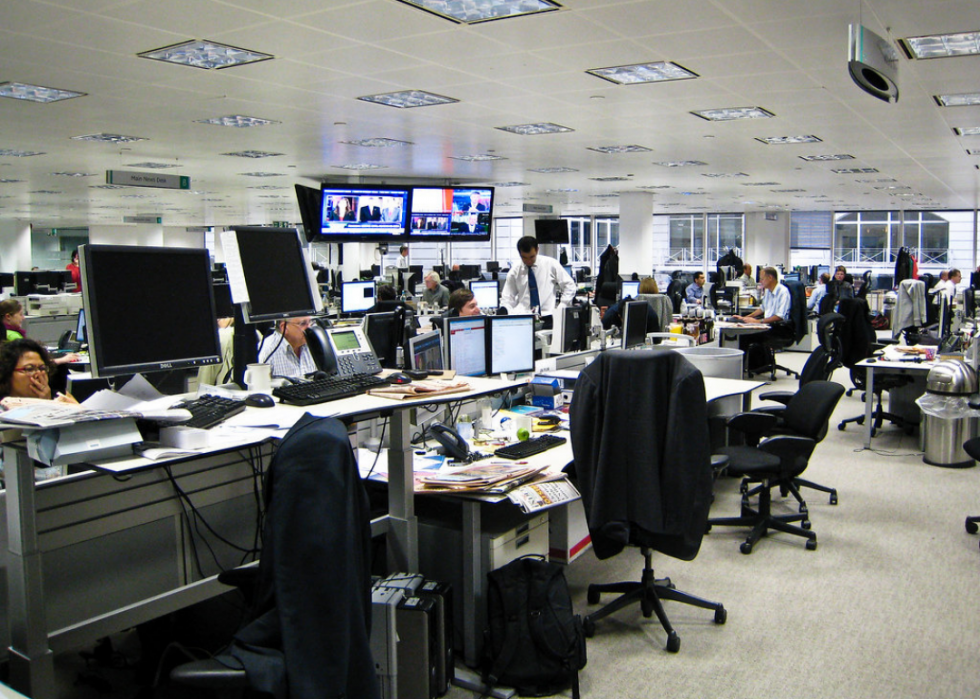
44 / l
A rush to publish eroded confidence
The rise of instant, real-time digital news distribution made it more than of import in the eyes of many to be first instead of being accurate. Several loftier-contour blitz-to-publish scandals eroded the credibility of some of the virtually prominent journalists and news organizations in the globe and stoked a full general feeling that people couldn't believe everything they read.

45 / l
GreenMeansGo // Wikimedia Commons
Competition for clicks led to clickbait news
Headlines were ever the most important entry point for whatsoever news story, simply in an era where profits were measured by clicks, good headlines were sometimes seen as more than important than good stories. Compelling, simply frequently misleading headlines persuaded readers to click on a story, only to detect that the actual content didn't justify the sensationalized headline.
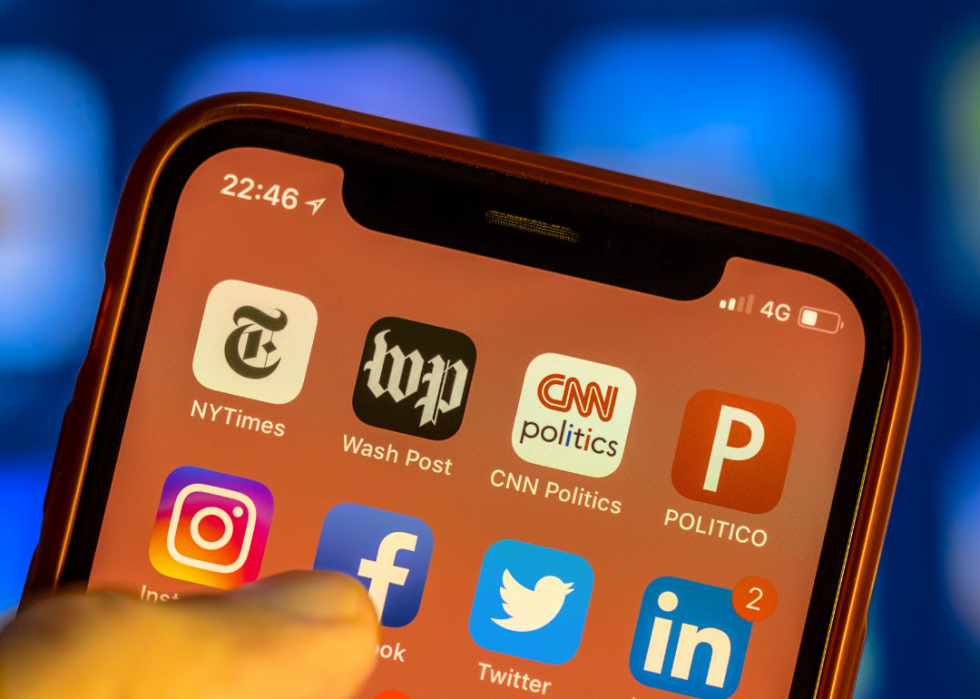
46 / 50
Rudmer Zwerver // Shutterstock
Social media became the gatekeeper of news
The rising of Facebook in the mid-2000s inverse forever the way people communicated with each other and shared news. Social media more often than not replaced traditional media outlets as the go-to source for upwardly-to-date information. Words similar "viral," "trending," and "buzzworthy" were the new measurements of a story'due south value and the masses could keep upward with the news they cared most just by following the right source.
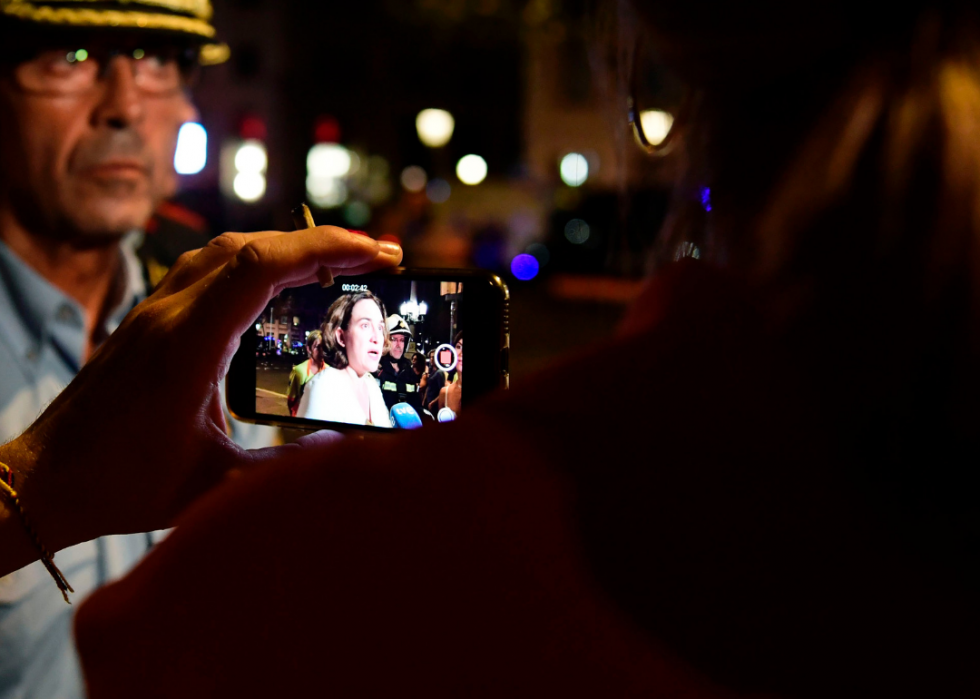
47 / 50
JAVIER SORIANO/AFP // Getty Images
Live streaming put constabulary on notice
The invention of alive streaming gave citizen journalists the most powerful tool e'er wielded in the fight confronting police brutality. At present, people who believed that police force enforcement had behaved poorly or acted excessively could broadcast the incident equally it happened through social media. Since the videos are uploaded live in real time, there'southward no photographic camera to confiscate or alternate narrative to present.
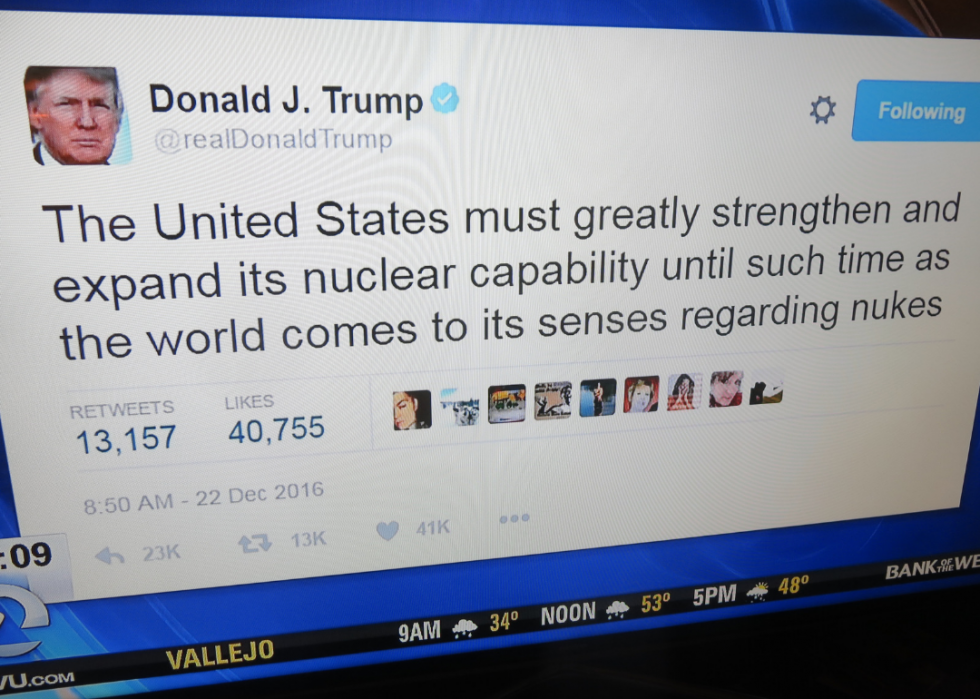
48 / 50
Twitter became a megaphone for the powerful
Twitter emerged as the go-to pick for direct, unfiltered advice between powerful, influential people and their audiences. Everyone from corporate bosses like Elon Musk to politicians like President Donald Trump sidestepped traditional media and used Twitter as a direct-connect medium for speaking directly to the masses.
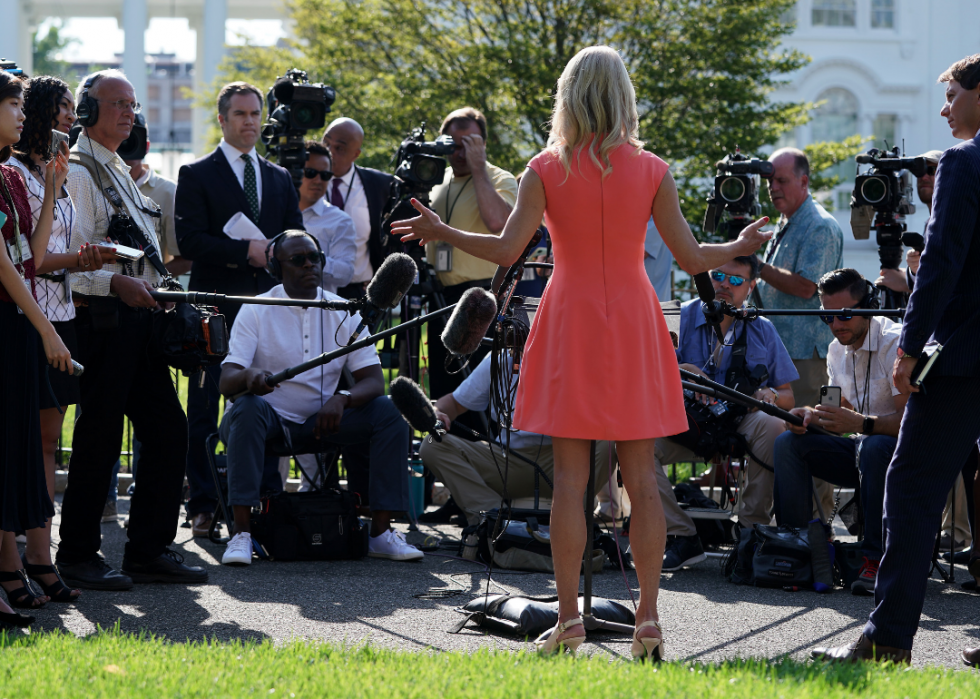
49 / 50
Scrap Somodevilla // Getty Images
The "mainstream media" became a boogeyman
As alternative news sources emerged in the digital age, a new phrase became the clarion call for some conservatives who denounced what they perceived to be a liberal bias in traditional news outlets: the mainstream media. Attacked equally Democratic shills, the so-chosen mainstream media (MSM) was targeted so heavily that proponents of the theory assumed that anything they saw or read in the news to exist a prevarication—or at least a distortion. Personalities like Rush Limbaugh, Bill O'Reilly, and Sean Hannity, along with organizations like Fox News, were well known for sounding the alarm the loudest, even though they were the highest-rated networks and personalities on television and the radio, ironically making them the very definition of mainstream media.

l / 50
Tomohiro Ohsumi // Getty Images
A sitting president chosen the media "the true enemy of the people"
Conservatives have demonized and scapegoated "the media" as a collective since the Washington Post exposed Richard Nixon's crimes and toppled his presidency. The past decade, however, particularly under the current assistants, has witnessed an unprecedented rise in hostility toward journalists. In October 2018, roughly 130 years later on the founding fathers enshrined liberty of the printing in the First Amendment of the U.S. Constitution, President Donald Trump publicly condemned the media as "the true enemy of the people."
Trending Now
© Stacker 2022. All rights reserved.
Source: https://stacker.com/stories/3312/50-ways-news-industry-has-changed-last-50-years
Posted by: jamesfarinell1998.blogspot.com


0 Response to "How Has News Reporting Changed Over The Years"
Post a Comment